After constantly pondering the idea of actually owning one for over 18 months, I finally acquired a Vudoo Gun Works V-22 .22LR rimfire barreled action. The Vudoo Gun Works V-22 has become all the rage in the precision rifle community ever since it went to market back in 2017. At the current base price of $1320 USD for the bare action and $1770 USD for a barreled action, this is one of the more expensive 22LR rimfire rifles on the market. So why is the V-22 desirable at a relatively high price?
The Vudoo Gun Works V-22 is a rimfire repeater. This is nothing new. There are plenty of great rimfire repeaters out there at a lower price, most notably the venerable CZ 450 series (e.g. 452, 455, and the current 457).
But the V-22 is unique in that it is a Remington 700-style pattern action and it feeds from a proprietary magazine with the same external form factor as an AICS compatible magazine. This means that the V-22 can utilize most Remington 700 short action compatible stocks or chassis as well as Remington 700 compatible triggers.
The fact that the V-22 utilizes Remington 700 compatible accessories means that the V-22 will provide shooters a rimfire rifle in a platform that will nearly mirror their centerfire platforms, providing and excellent training platform for shorter distance range facilities.
Of course, the V-22 is also desirable because it has been proven to be an accurate platform based on all of the user feedback and testimony in the past couple of years.
With that said, I toyed with the idea of owning one for quite some time and that idea slowly built to reality in the past few months as I found myself shooting primarily .22LR at the range. My primary range currently provides 100 yard shooting and shooting centerfire rifle at that distance is a waste of ammo and barrel life.
Unless I am load developing, I get no real benefit shooting at 100 yards with a scoped centerfire from a bench or prone position. My secondary range goes out to 600 yards, but I found myself getting more value shooting .22LR at 200 and 300 yards vs centerfire at 500 and 600 yards.
My CZ 455 has seen a lot of use so far in 2019 and given that I did not see myself shooting less rimfire, I felt that the Vudoo Gun Works V-22 would be a great acquisition. So I ordered one in direct from Vudoo Gun Works in August of 2019 and after about 5-6 weeks (from date of order to actual ship date along with the California 10-day wait), I got the barreled action in-hand.
When I ordered it, I ended up getting a 20″ MTU contour Bartlein barrel with the barreled action coated in Flat Dark Earth Cerakote.
I should address the barrel selection since it is probably going to be one the more important decisions when ordering a V-22. I have actually been a fan of the 16.5″ barrel length for .22LR. When I had my 10/22 setup with a Volquartsen 16.5″ barrel it also shot great. I ended up swapping out for a Volquartsen 20″ barrel and it actually opened up a little bit and made me weary of longer barrels. When I acquired my CZ 455 I went with the 16.5″ barrel and it shoots great.
Depending on what you read out there, a lot of discussion seems to favor the 16.5″. I was thinking that I might get the V-22 with a 16.5″ barrel. But after using my CZ 455 in some NRL22 matches and watching other shooters with their platforms, I decided to get the 20″ barrel. The reason is that I feel that the 20″ gives a nicer balance even though there is a sacrifice of maneuverability with an extra 3.5″ on the barrel.
I picked the MTU contour because I have this notion that heavier barrel contour is better when it comes to barrel harmonics and heat.
Vudoo Gun Works typically sells the V-22 with their Ace barrel which is an outsourced barrel that is made exclusive for VGW and to their standards. But VGW also offers Bartlein and Kreiger barrels. I elected to go with a Bartlein because I am familiar with Bartlein and wanted to try out a Bartlein rimfire barrel. Note that based on various reports from users, it really doesn’t matter which barrel manufacturer you go with on the V-22 when it comes to accuracy.
I went with a 30 MOA scope base since that is widely looked at as the standard for long range rimfire (and is what I have on my CZ 455).
I was surprised by the size of the recoil lug. The thickness is on par with a Remington 700 style action, but the height of the lug is quite short. I am curious as to why Vudoo Gun Works went with this design. Granted, rimfire is such a low recoil round, but in terms of those wanting to bed or otherwise lock a recoil lug into place, a taller one would seem to make more sense.
The V-22 barreled action comes with the actions screws and trigger pins. The action screws are long and need to be trimmed to fit. I ended up using screws from MPA which are the exact length.
Of course, the V-22 barreled action still needs all the other components to become a functional rifle. Where did I go from there?
I actually acquired the chassis before I even ordered the V-22 barreled action. I bought a Masterpiece Arms BA Competition chassis which is the current chassis I use on my 6mm Creedmoor Mausingfield build. I ended up getting another MPA BA Comp because Brownells started carrying Masterpiece Arms products and MPA had a rebate deal on any MPA chassis purchased (get three free specific accessories).
Even without the rebate deal, I knew I wanted to run the V-22 in an MPA chassis because I have the aforementioned 6mm Creedmoor platform in the MPA BA Comp, but I also have my CZ 455 in an MPA chassis.
I then ordered the trigger in the form of the TriggerTech Diamond Pro Curved. The TriggerTech Diamond has become a very popular trigger in PRS/NRL shooting. I have actually been extolling the virtues of TriggerTech since the early days when TriggerTech only had one version of their Remington 700 compatible triggers. I have one on my Remington 700P (.308) and it is an excellent single-stage trigger. I ended up choosing the Diamond for the V-22 build because I wanted to try the TriggerTech Diamond after reading about it so much.
Also, the TriggerTech Diamond is confirmed to be functional with the V-22 without issues. It is important to note that even though an aftermarket trigger might be designed for Remington 700 pattern receivers, not all custom / aftermarket Remington 700 pattern receivers are fully compatible with any of those triggers. There are slight geometry differences with actions and bolts that could be problematic with a given trigger.
Thus, a safe bet for an exceptional trigger for the V-22 is the TriggerTech Diamond.
Regarding the optic, I initially was going to get another Vortex Optics Razor HD AMG 6-24x50mm MRAD since I have been quite happy with this scope on my 6mm Creedmoor Mausingfield and my 6.5mm Creedmoor Savage 10FP. But when I ordered one from Amazon (third-party Vortex Authorized retailer, fulfilled by Amazon), I ended up receiving a fake scope. I returned it and when I was looking at alternate retailers to get a scope from, I decided to just get the KAHLES K525i SKMR3 LSW from Brownells.
I was originally considering the KAHLES K525i because I wanted to try out one of these scopes. KAHLES is getting a lot of good word of mouth and I was intrigued by both the SKMR3 reticle and LSW (Left-Side Windage) knob. Since the K525i has a minimum parallax of 20 meters, the K525i is a valid scope for a 22LR rimfire platform.
As far as the scope mounting solution, I went with American Rifle Company M10 rings (34mm diameter, 28mm height). I use the ARC M10 mounts on other rifles and it is highly regarded as an excellent scope ring design.
I actually planned on not using the NV bridge of the MPA chassis because I wanted to get the scope a little lower like with a non-chassis, non-AR height handguard. So I went with the 28mm tall rings thinking the KAHLES K525i with sunshade would make contact. Come to find out there still is clearance so all is well.
After assembling the rifle, I weighed the rifle with optics using a digital hanging scale that only has two-tenths of a pound (4 ounces) accuracy and the V-22 build tipped the scales at around 14.6 lbs (~14 lbs 10 oz) without magazine or bipod. With the Atlas CAL and RRS BTC-Pro adapter it tips the scale at 15.2 lbs (~ 15 lbs 3 oz).
For comparison, my 6mm Creedmoor ARC Mausingfield with 24″ Remington Varmint contour barrel weighs right at 15 lbs on the same scale without optics and without magazine or bipod. That MTU contour definitely adds weight, especially with a .22LR bore (smaller bore, more metal), even with the shorter 20″ length.
Just to throw this tidbit out there, my CZ 455 16″ Varmint Tacticool in the MPA CZ chassis weighs 10.0 lbs; roughly two-thirds the weight of my VGW V-22 build.
The build sheet with normal retailer pricing is as follows:
Vudoo Gun Works V-22 Rifle Build Price Breakdown
| Part/Service | Make/Model | Cost |
|---|---|---|
| Action | Vudoo Gun Works V-22 | $1770 |
| Barrel | Bartlein 20" MTU Contour 1-16" twist, threaded muzzle. | Priced with action. |
| Trigger | TriggerTech Diamond Pro Curved | $290 |
| Chassis | Masterpiece Arms BA Competition Chassis | $999 |
| Scope Base | Vudoo Gun Works 30MOA base | Included with action. |
| Scope Rings | American Rifle Company M10 34mm, 28mm height. | $180 |
| Scope | KAHLES K525i 5-25x56mm LSW SKMR3 | $3299 |
| Cerakote of Barreled Action | Flat Dark Earth | Included with barreled action. |
| TOTAL | $6538 |
Total Build Price: $6538 (53.2% of the price attributed to the scope and rings)
Note that I stated “normal retailer pricing” because I did use Brownells discount coupons when I ordered the chassis and trigger. I want to be clear that I am not being compensated by any company or retailer. I paid for everything out of my own pocket I bought all my parts like any other regular Joe customer. I am not affiliated with any of these companies.
My V-22 build actually costs nearly the same as my 6mm Creedmoor ARC Mausingfield build which was $6495 without the bipod.
Although, without optics and rings the V-22 build is priced at $3059 vs my Mausingfield build at $3695 ($3395 if you remove the barrel blank installation labor costs).
There were a few incidentals including three magazines (V-22 barreled action is sold with one magazine) for $99, the Vudoo bore guide at $39.95, and some MPA magazine catch parts which I will not include in the rifle build price.
I also excluded the bipod in the build price since I already have several Harris S-BRM bipods and an Atlas CAL.
Now as far as those MPA magazine catch parts, during my wait time for the V-22 to be built, I became aware of a compatibility issue with the V-22 in MPA chassis systems. Apparently, some people noted issues with rounds not feeding correctly from a magazine in an MPA chassis. This is rooted in the fact that the magazine may not be high enough in the receiver or level with the receiver when locked in on the magazine catch.
All repeating rifles feeding from a magazine require correct geometry when a round is stripped off the magazine by the bolt in order to operate correct. This is even more critical for .22LR rimfire particularly because of the size of the cartridge and how controlled round feed systems operate.
Anyway, the issue with the V-22 and MPA chassis systems has been mitigated through either a different magazine catch or a magazine block insert, both available from Masterpiece Arms.
In order to be prepared to solve this issue assuming it would be present in my build, I ordered the MPA long action magazine catch, the MPA adjustable magazine catch, and a pair of the magazine block inserts.
I eagerly took the assembled rifle to the range with a wide-range of ammunition to test with. I have quite a bit of .22LR on hand and the following is what I initially tested:
- SK Standard Plus
- SK Rifle Match
- SK Long Range Match
- Lapua Center-X
- Lapua Midas+
- Lapua X-Act
- CCI Standard Velocity
I decided to start off testing with Lapua Center-X. Based on the user reports and what I have seen in NRL22 matches, Lapua Center-X is becoming a go-to for V-22 shooters. I also watched an interview with Vudoo Gun Works where it was stated the V-22 chamber was specifically designed for Lapua ammunition.
The V-22 RAVAGE chamber, designed by Mike Bush, is a Super Match Grade chambering, compatible with the higher quality 22LR Match ammunition, but will shoot non-match ammo.
https://vudoogunworks.com/faq/
Granted, SK could be considered Lapua since Lapua owns SK and may be applying the same external specifications to SK ammunition.
During the session, I fired two (2) 10-round strings with each of the ammunition types listed previously in the article at 50 yards. The conditions at the time were around 60F to 65F throughout the duration of the range session with winds between 1 and 8 mph with continuous gusts and let-offs.
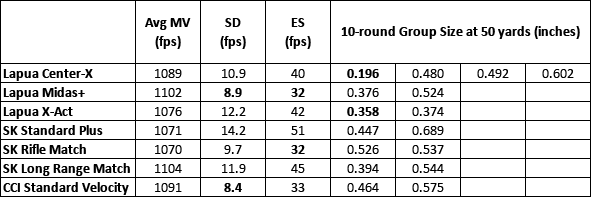
Note that I did fire two additional 10-round strings at the end of the session with Center-X (and the Magnetospeed removed).
Most of the initial groups above are not overly spectacular, but still solid. I used bold text in the chart for the two ‘best’ results in the SD, ES, and group size criteria.
The initial results show that each ammo type is capable of shooting MOA (1 MOA at 50 yards is ~ 1/2 inch). The second to last group I shot the morning of the range session was Lapua Center-X with a 10-round group size of .196 inches. The accuracy potential is evident here with Center-X and the other ammunition types.
Although, the initial results on paper appear to favor Lapua over SK.
I was surprised by CCI Standard Velocity. A 500-round brick of CCI Standard Velocity is around $22 (give or take depending on retailer). SK Standard Plus is considered a low-cost ‘match-grade’ option and is around $46 for a 500-round brick. SK Rifle Match is considered one of the better match-grade options and runs for about $60 per 500-round brick.
My results shows CCI Standard Velocity shooting on par with SK Standard Plus and SK Rifle Match, thus leading to the notion that CCI Standard Velocity is a viable option for my V-22. Not to mention CCI Standard Velocity has an SD of 8.4 which was the best amongst all the ammo I shot during the initial session.
It is important to note that the results from .22LR rimfire testing must be taken with a grain of salt because .22LR there is a lot of voodoo (pun intended) when it comes to .22LR accuracy.
Two .22LR rifles of the same manufacturer and model could shoot completely different in terms of what ammo they shoot best. Also, the same make and model of ammo can shoot different in the same gun when the ammo lots change.
So it is important to view my own results within the context of the range session. It is possible that in future test, group sizes may increase or decrease, but I expect the groups to scale appropriately with different ammunition being shot in the session. Of course, I need to fire more rounds for each ammunition type to get a larger sampling and obtain a more representative trend on how each ammunition type shoots.
I have also been told by many (actual good shooters) that I should stop shooting 10-shot groups for accuracy testing and that 5-shot groups are better to reflect mechanical accuracy without shooter error. This is actually a sound concept because more often than not, it is the shooter inducing the inaccuracy over the duration of a string. For me, I know all of my benchrest error is due to my rear bag manipulation and stock to shoulder recoil control.
Ideally, I would go to an indoor ammunition testing facility like the Lapua Rimfire Test Center in Mesa (Arizona). In these test centers, rifles are fixed in place (often removing actions from the stock/chassis and placing in a special jig that is secured in a vise).
“The firing is performed from a machine rest in a controlled environment, eliminating the variables associated with outdoor testing, shooter fatigue or error.”
https://www.capstonepg.com/rsc/
Also, from messages that I have been receiving from other Vudoo V-22 owners, the barrel still needs to settle in with more rounds fired and the groups should start tightening up even more.
We recommend you have at least 1,000 rounds through your barrel before testing with us, as new barrels require a break in to get consistent results.
https://www.capstonepg.com/rsc/important-notes/
After all that talk on the results on target, I will honestly say that my impressions of the Vudoo Gun Works V-22 are very positive.
The flat dark earth Cerakote is done well and comes very close to matching the FDE finish of the Masterpiece Arms BA Comp chassis. I was actually going to just get the V-22 barreled action in regular black finish, but decided to go FDE Cerakote since the price is (currently) the same with or without Cerakote.
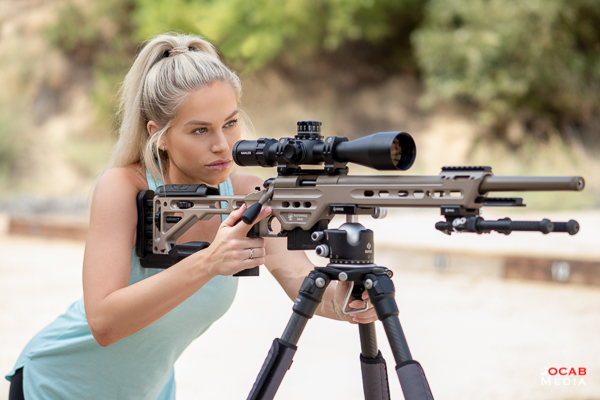
I didn’t mention earlier that I specified a threaded muzzle. I honestly was thinking about going unthreaded because I’m in California which rules out a suppressor. But I thought I would possibly put a muzzle brake on it for some odd reason. So I went ahead and ordered the barreled action with muzzle threading. I was concerned with how flush the thread protector would be and fortunately the thread protector is sized appropriately.
I found the bolt operation to be quite smooth, but a bit snug.
I am using a good amount of oil right on the bolt body and raceways to keep things running slick as the bolt wears in with respect to the action.
I mentioned earlier that there have been reported issues from some Vudoo V-22 actions in MPA chassis systems with regards to the rounds not stripping off the magazine correctly. Thankfully, I ended up not needing the other MPA magazine latches nor the MPA magazine block parts as the rounds fed off the magazines perfectly.
Ejection is near perfect with the Vudoo Gun Works V-22 and empty cases eject with authority.
The one aspect of the bolt is that it can require some forward push on the bolt during bolt close due to how the match chamber is designed. Vudoo Gun Works designed the chamber with Lapua ammo in mind, such that the round is pushed into the lands when closing the bolt. This creates that seating to lands, or slightly into lands, that most handloaders attempt to achieve when making centerfire ammunition for their rifles (to maximize accuracy). With Lapua ammunition the bolt close resistance is minimal, but with CCI Standard Velocity ammunition it was noticeably more resistant.
As far as other parts of the build, I am immediately liking the SKMR3 reticle of the KAHLES K525i. It is very clean for a “Christmas Tree” style reticle with only hashes and no dots. It does not feel cluttered at all.
The open crosshair center with a fine dot helps the shooter get on the target quickly yet prompts the shooter’s eye to seek the dot to get that sight picture before breaking the shot. This style of open center crosshair reticle with fine dot was quickly lauded by shooters. The fact that other scope manufacturers are producing their own version of this reticle (e.g. Vortex Optics EBR-7C, Nightforce Optics Mil-XT) is evidence of a trend towards this type of reticle within the shooting community.
I figure I should mention a few quirks and/or gripes that I came across during build and testing phase.
First off, I was a little annoyed that the KAHLES K525i did not come with a sunshade. The K525i also did not come with scope caps, but they did include a neoprene scope cover and to be honest I don’t use caps on some of my scopes so the lack of caps didn’t bother me.
But the lack of the sunshade does bug me especially when this is considered a top-tier scope (definitely carries a higher tier price at $3299 USD) and you would expect a high end scope to include the sunshade. I ended up ordering the sunshade from Brownells which carries a price of $59.95. What are you going to do?
A second quirk is that the latest revision of the Masterpiece Arms BA Comp chassis is ambidextrous by default and comes with a generic plastic plug to cover the hole for the side not being used. I understand why MPA did this since it saves production times. They don’t have to worry about making a right-hand or left-hand specific chassis. Just build one chassis with cuts on both sides and it works for either (Magpul uses this same concept on the Magpul Pro 700 chassis).
But the design of the plug is pretty chintzy on the MPA BA Comp. It is not screwed in and from what I understand it uses a spring that goes between the plug and receiver to keep it tensioned into place. But I’m not sure because the spring was missing from the box. I thought about using a Super Glue type adhesive to secure the plug, but I opted to run the gun without it. Some will find this hole displeasing to the eye, but it doesn’t really bother me, although the red body of the TriggerTech Diamond brings focus to that hole on the non-bolt handle side of the rifle..
As far as the unknowns right now, I am still wondering if the KAHLES K525i was the best choice for my build. It is obviously a high quality scope and I really wanted to try the KAHLES K525i since KAHLES has been highly regarded in the community and the left-side windage knob is a novel idea.
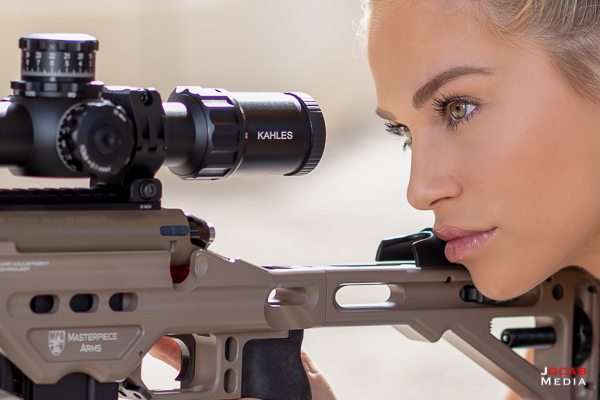
But the price of the KAHLES K525i is ‘only’ a few hundred less than the Nightforce Optics 7-35x56mm ATACR F1, which is another highly regarded scope in the precision rifle community. The 7-35x ATACR is renowned for it’s highly forgiving eye box even at max magnification (one of the first things I noticed when I looked through one at SHOT Show a couple years ago) and it has the advantageous ability to parallax adjust as short as 10 meters (20 meters for the KAHLES K525i).
From an Extreme Long Range (ELR) rimfire standpoint, the 7-35x might have been a better choice just for the higher magnification (35x), and the 7-35 ATACR and K525i both have 29 MIL of elevation travel. I don’t want to say I have doubts with the KAHLES, but I still wonder about my scope choice nonetheless.
I know people are thinking about a rimfire trainer are going going to ask me: CZ 457 or Vudoo V-22?
I really like my CZ 455 and I think the CZ 455 (or CZ 457) offer excellent performance for the money out of the box, especially when you look at the CZ varmint contour models. Lilja makes highly regarded drop-in barrels and a buddy of mine put one on his CZ 455 Precision Trainer has nothing but praise for it. Bartlein also makes drop-in CZ 455/457 barrels on a regular basis. The CZ 457 Precision Trainer is about $1000 USD, which is a third of the cost of my V-22 build.
But there are quirks with the CZ that makes one want to get the V-22. The action of the CZ is solid, but not great. It can function smoothly, but it is very easy to induce misfeeds if you don’t operate the bolt correctly.
The trigger on the CZ is also a limiter. Many people including myself use the Yo Dave trigger kit on the OEM CZ 455 trigger to achieve lighter and cleaner trigger pulls. It works well enough to be honest. But if you want more out of a trigger, options are limited, especially when many aftermarket triggers will not fit in aftermarket CZ 450-series stocks or chassis without extra inletting. But the new CZ 457 does come with a redesigned OEM trigger that is adjustable for pull weight and travel.
Even if you put the CZ 450-series into an aftermarket chassis, the gun still feels like a rimfire. That is to say that the ergonomics of the CZ 455/457 cannot be altered with a stock or chassis to make you forget you are shooting a scaled down rifle.
The Vudoo Gun Works V-22 fits a growing niche of rimfire shooters who want a rimfire action built from the ground up for precision and accuracy / consistency and who want a platform that mimics a centerfire form factor. The fact that the V-22 allows the shooter a plethora of stocks, chassis, and triggers to choose is what makes the V-22 more enticing overall.
So my answer to CZ 457 or Vudoo V-22? If you are on any sort of budget, get the CZ 457. I can’t imagine an out of the box CZ 457 with a Varmint barrel will shoot worse than 2 MOA at 50 yards (~1 inch) with random ammunition. If you take the time to test ammunition, I anticipate you can find at least one type that will shoot 1 MOA (~1/2 inch) a majority of the time.
If you are any sort of avid shooter (whether competitive or recreation) and can swing the V-22 the slightest bit, I recommend the Vudoo Gun Works V-22 for the inherent accuracy and precision potential afforded by the platform.
After being an avid shooter for so many years, I have learned that there’s almost no such thing as overkill when it comes to quality of the gear.
I know some might think it is a bit premature for me to give any sort of assessment on the Vudoo V-22, but I will take this line at this point in time. Obviously, I will post a few more write-ups when I get the opportunity to do some 100 yard group testing and take it out to 200 yards, 300 yards, and further, and put more rounds down the pipe in general.
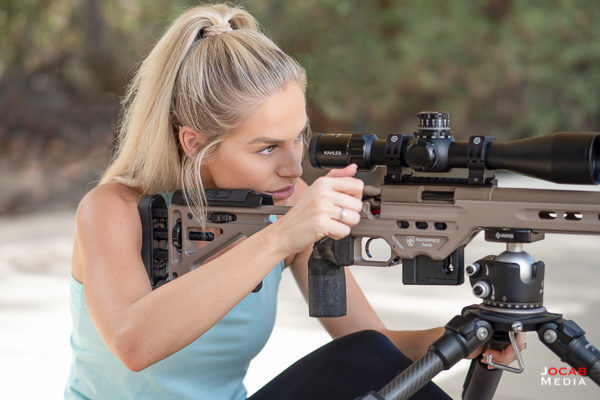
So stay tuned for more articles on my Vudoo Gun Works V-22 build on how this platform progresses for me. I am seriously considering making the drive out to Mesa (Arizona) to get my Vudoo V-22 tested (and the CZ 455 as well) in the Lapua Rimfire Test Center. It is a good excuse to get out of California and visit real America.
For more information on the Vudoo Gun Works V-22, check out the Vudoo Gun Works website at https://vudoogunworks.com.
Also, there was an interview with Vudoo Gun Works Director of Operations published in 2019 which has some good background on the V-22 and current precision rimfire shooting trends.

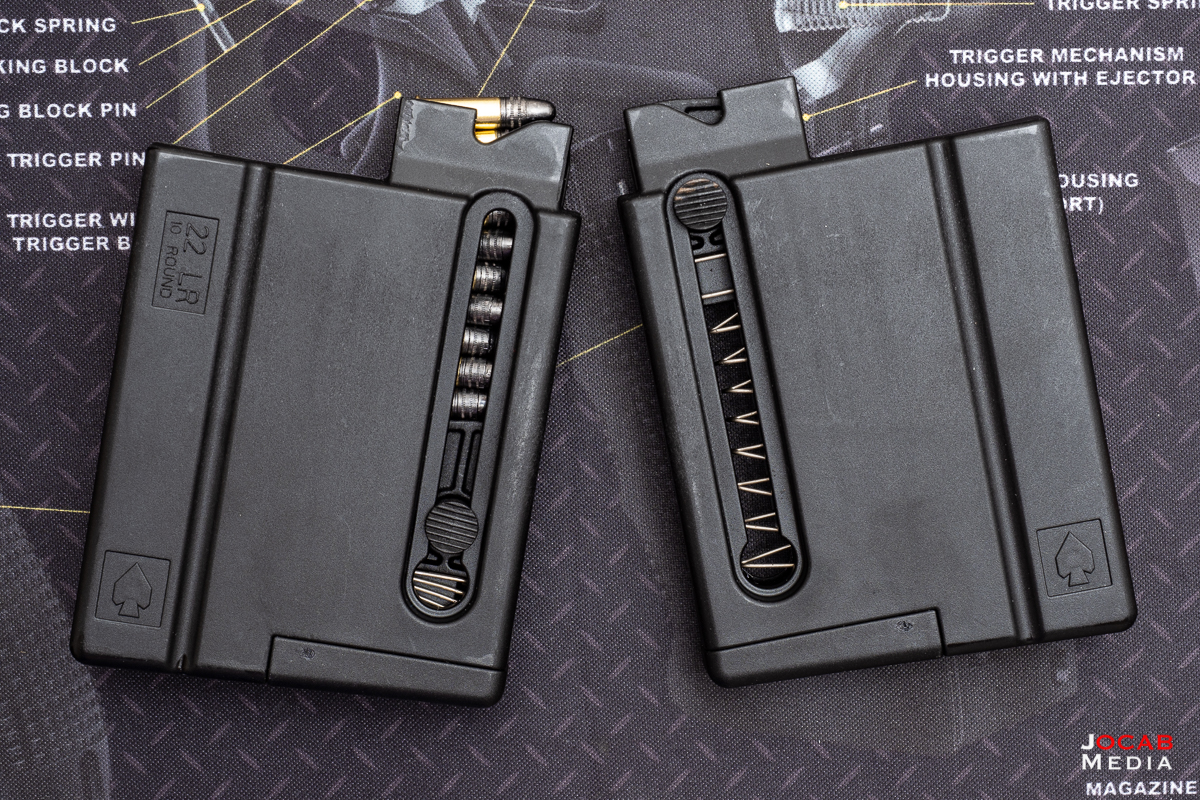
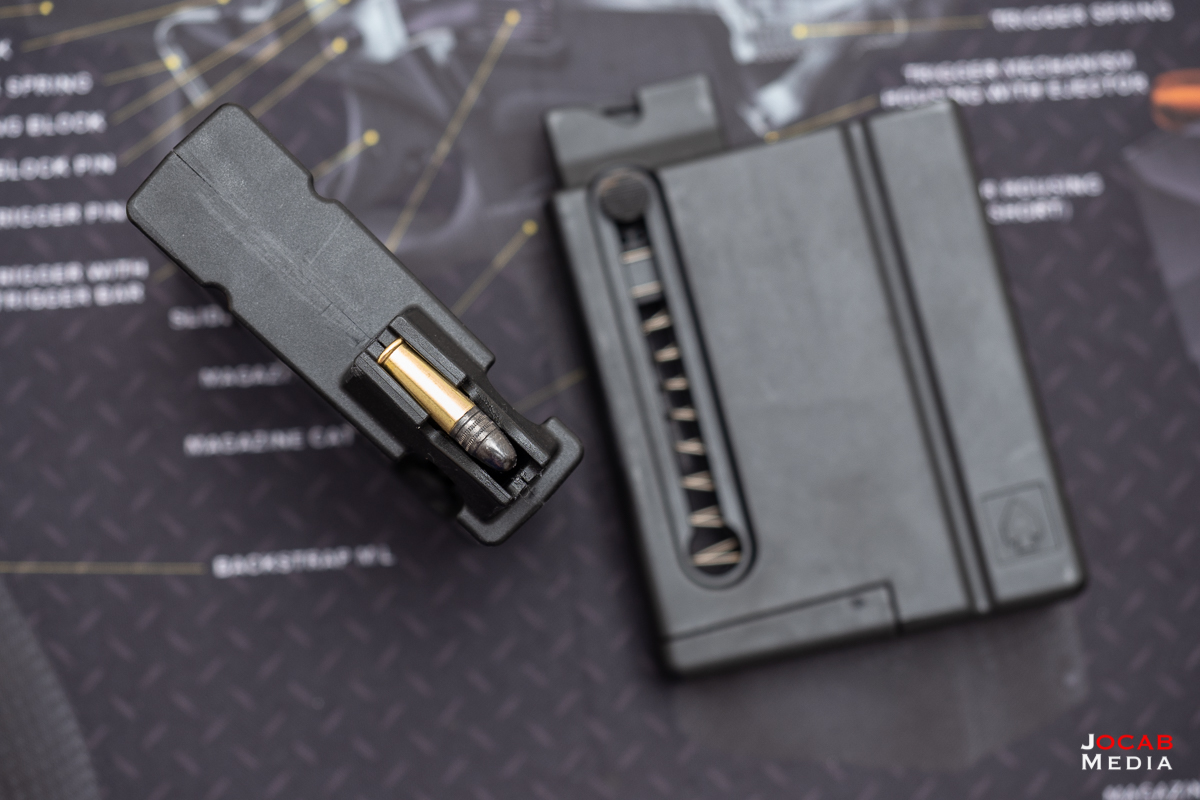
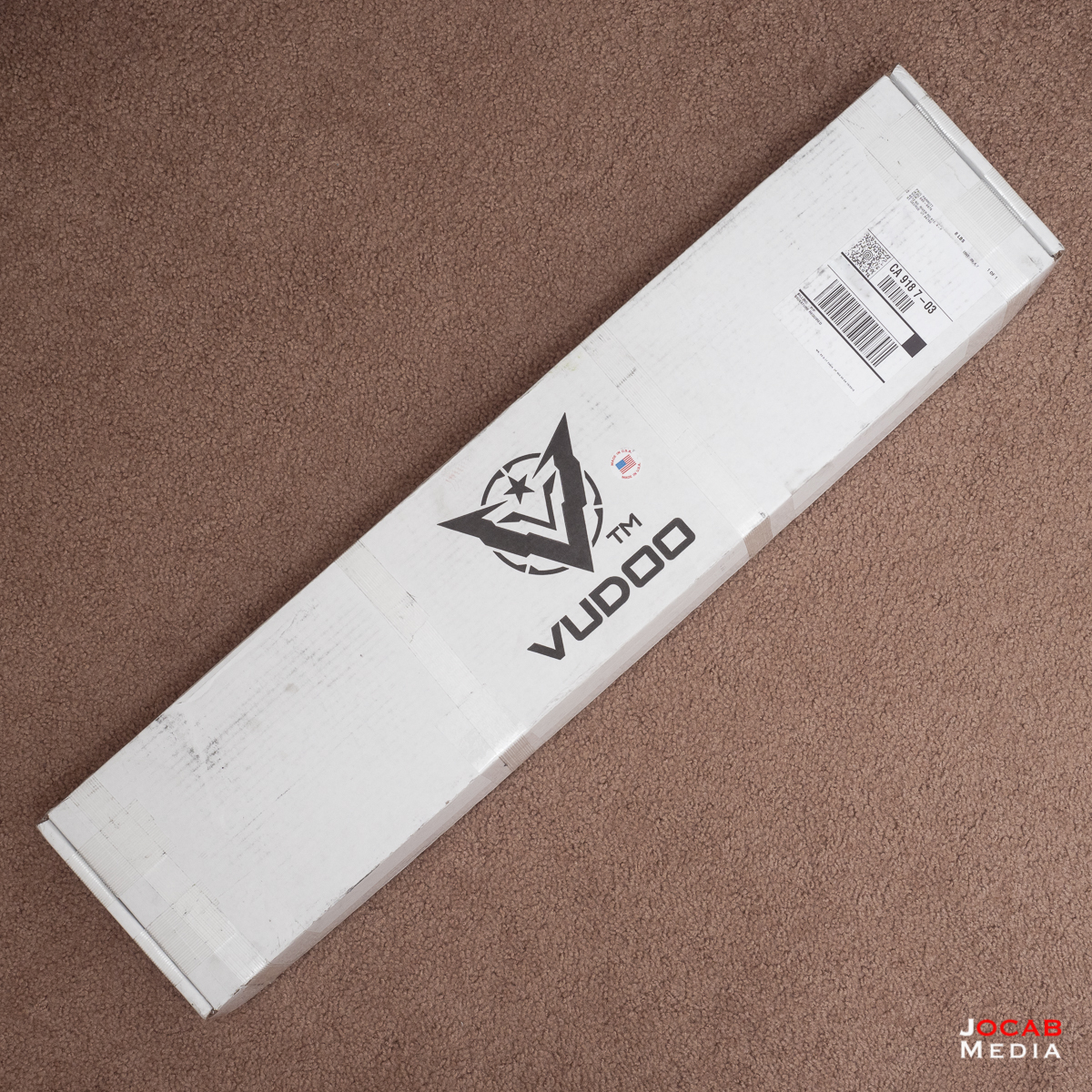
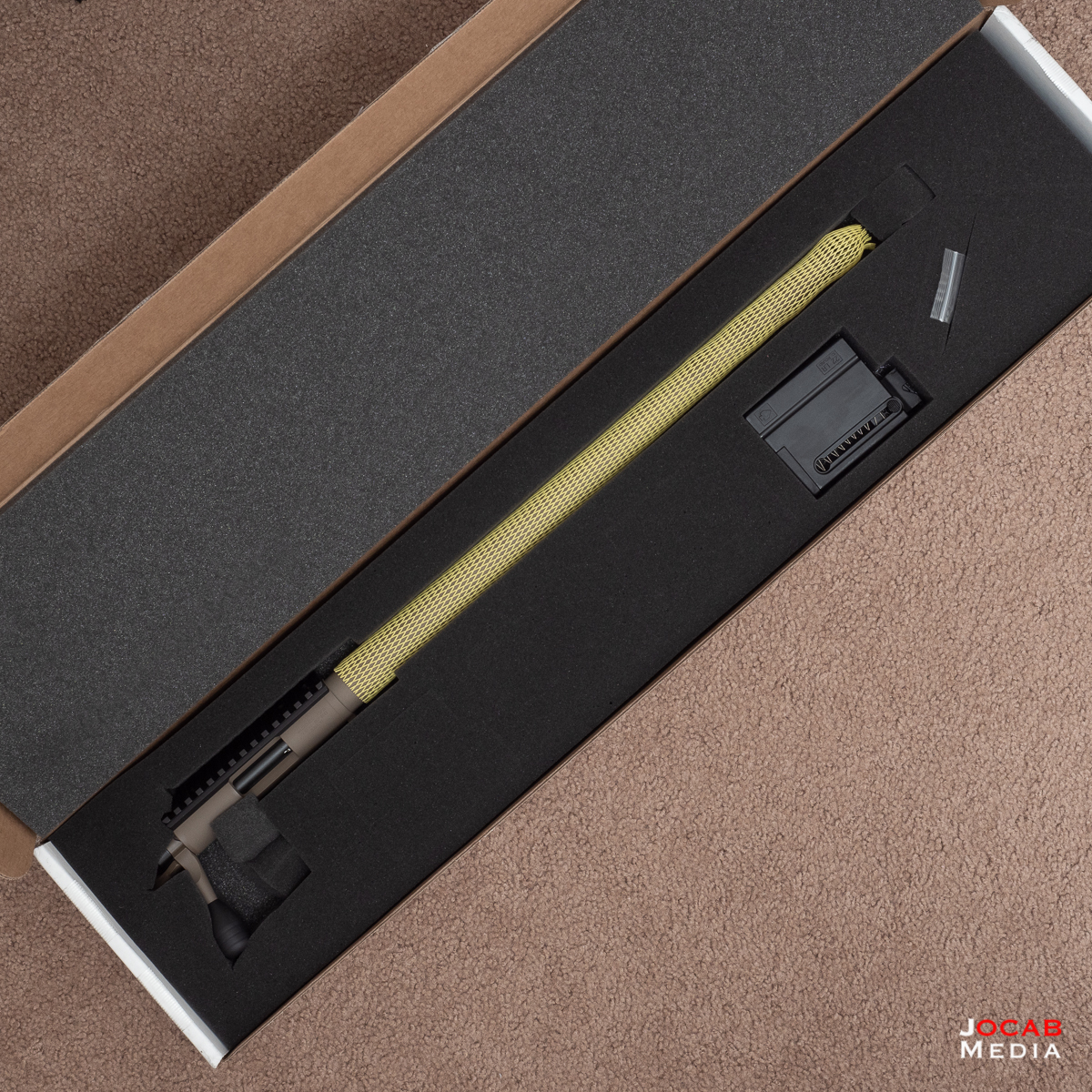
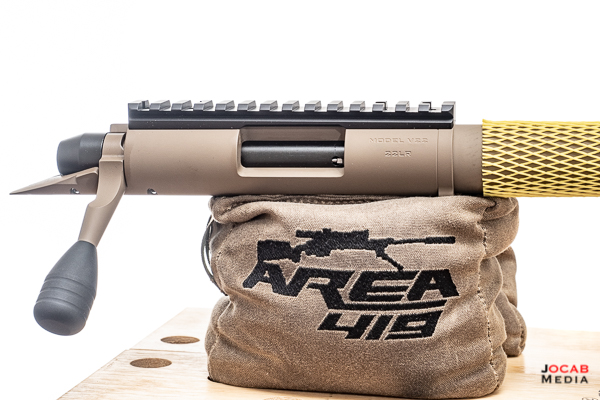
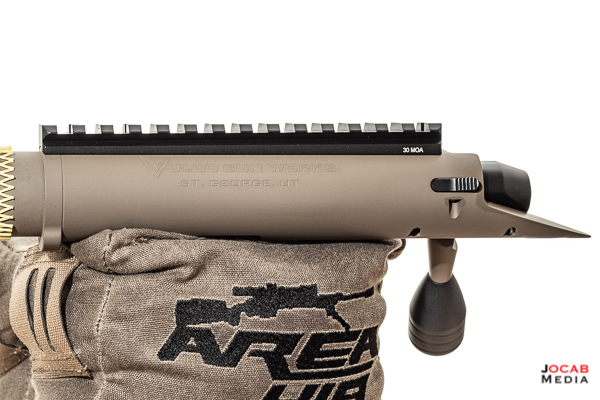
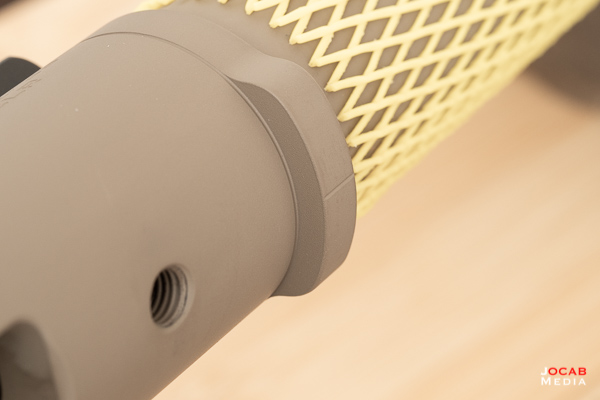
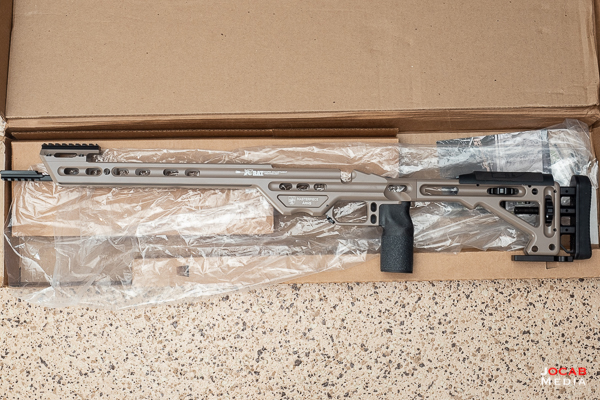
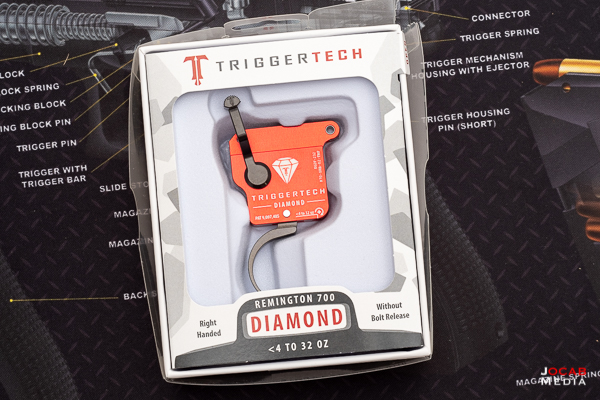
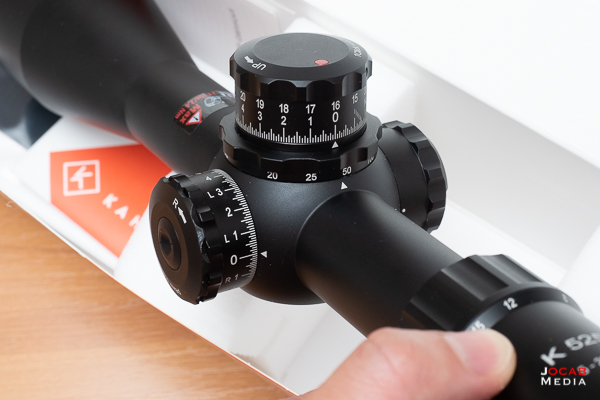
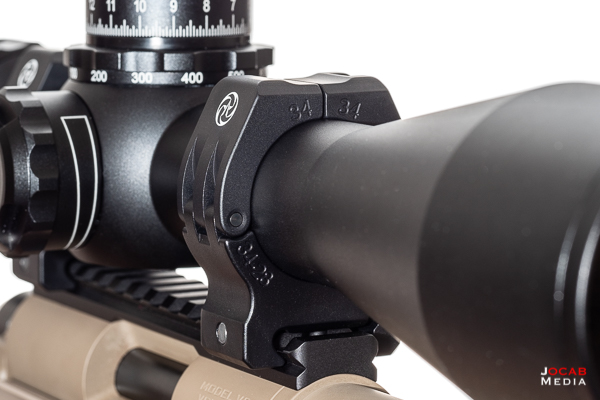
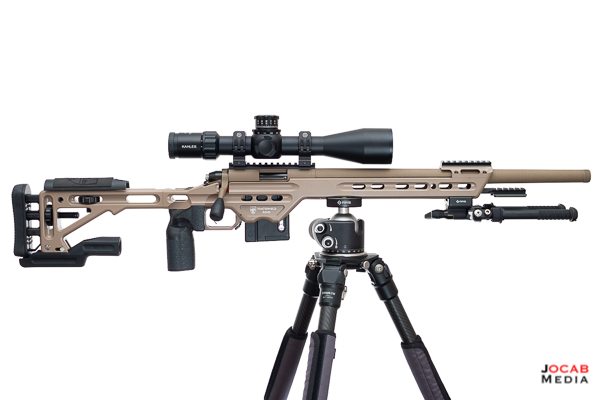
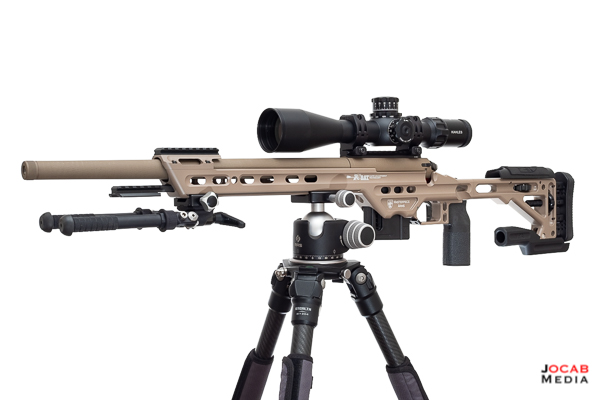
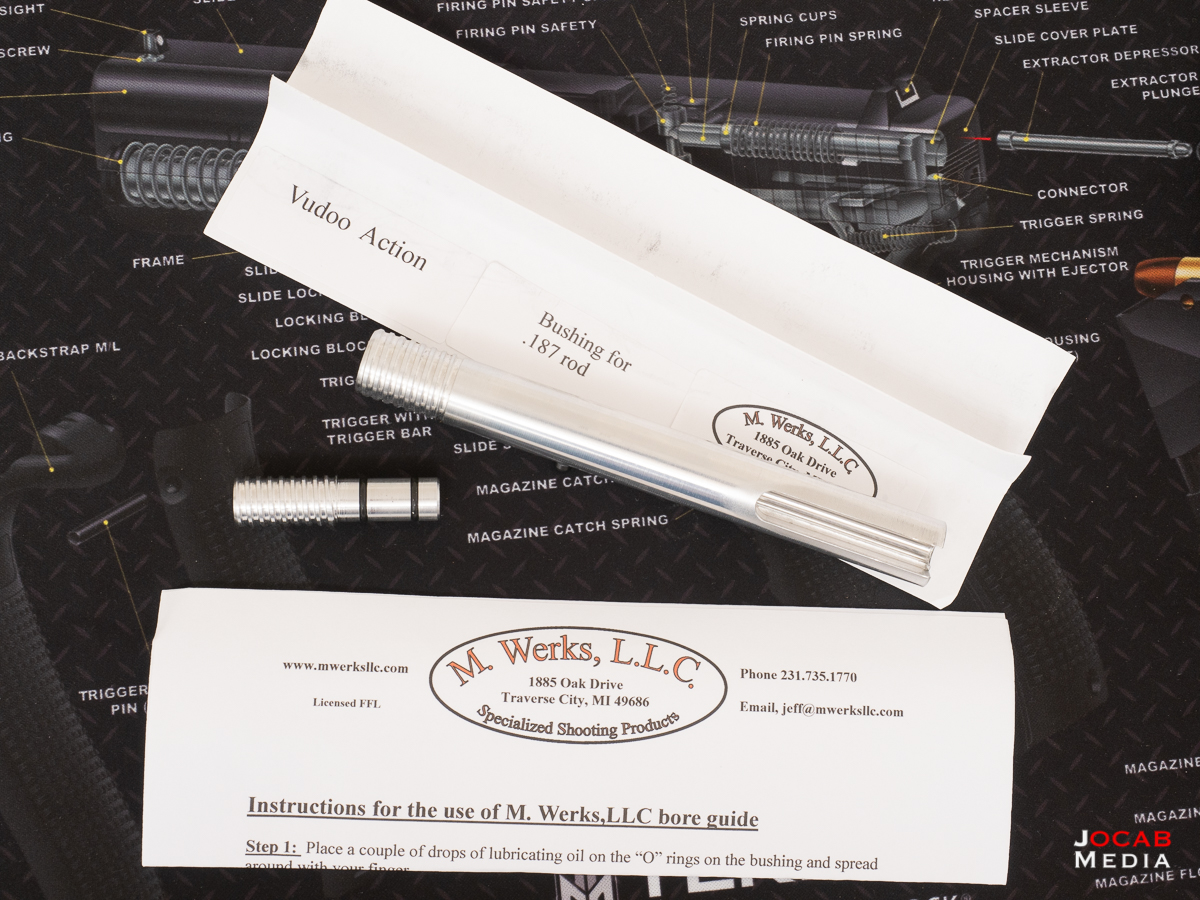
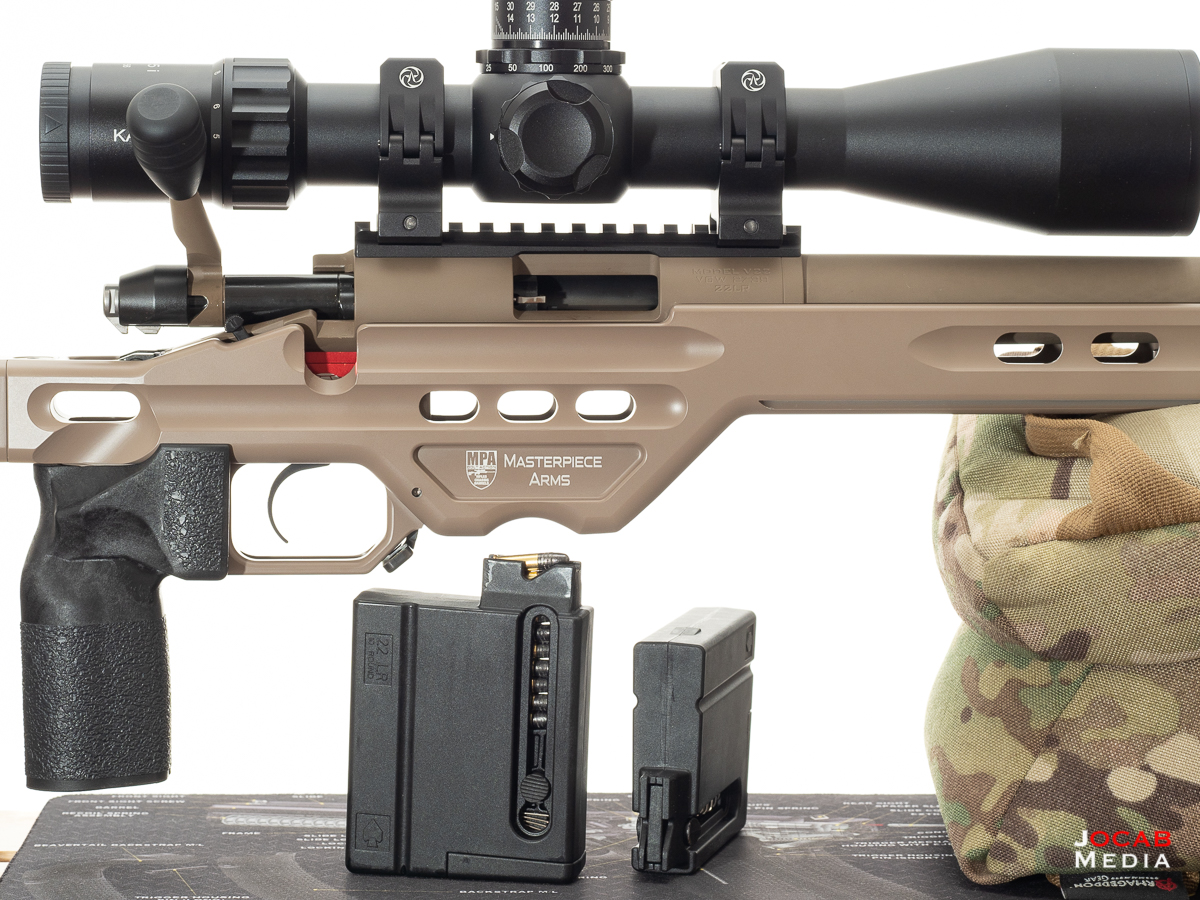
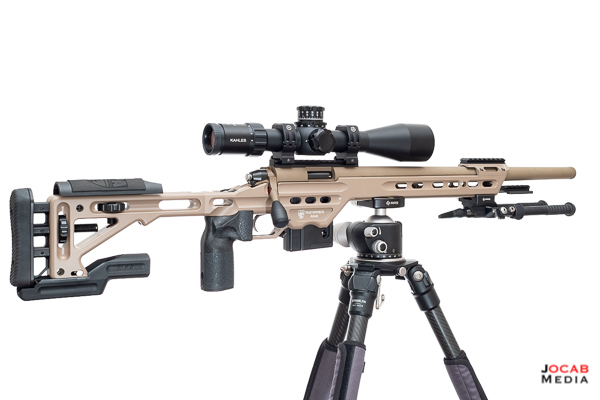
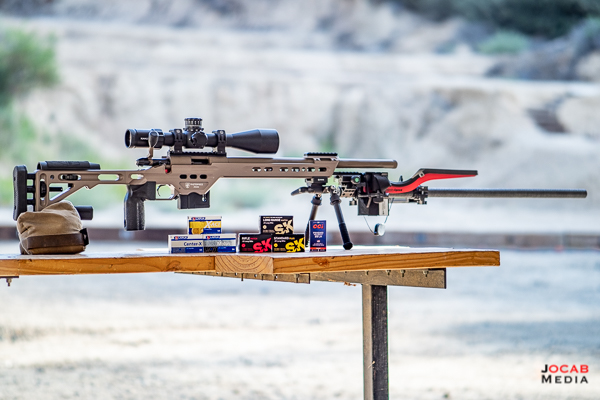
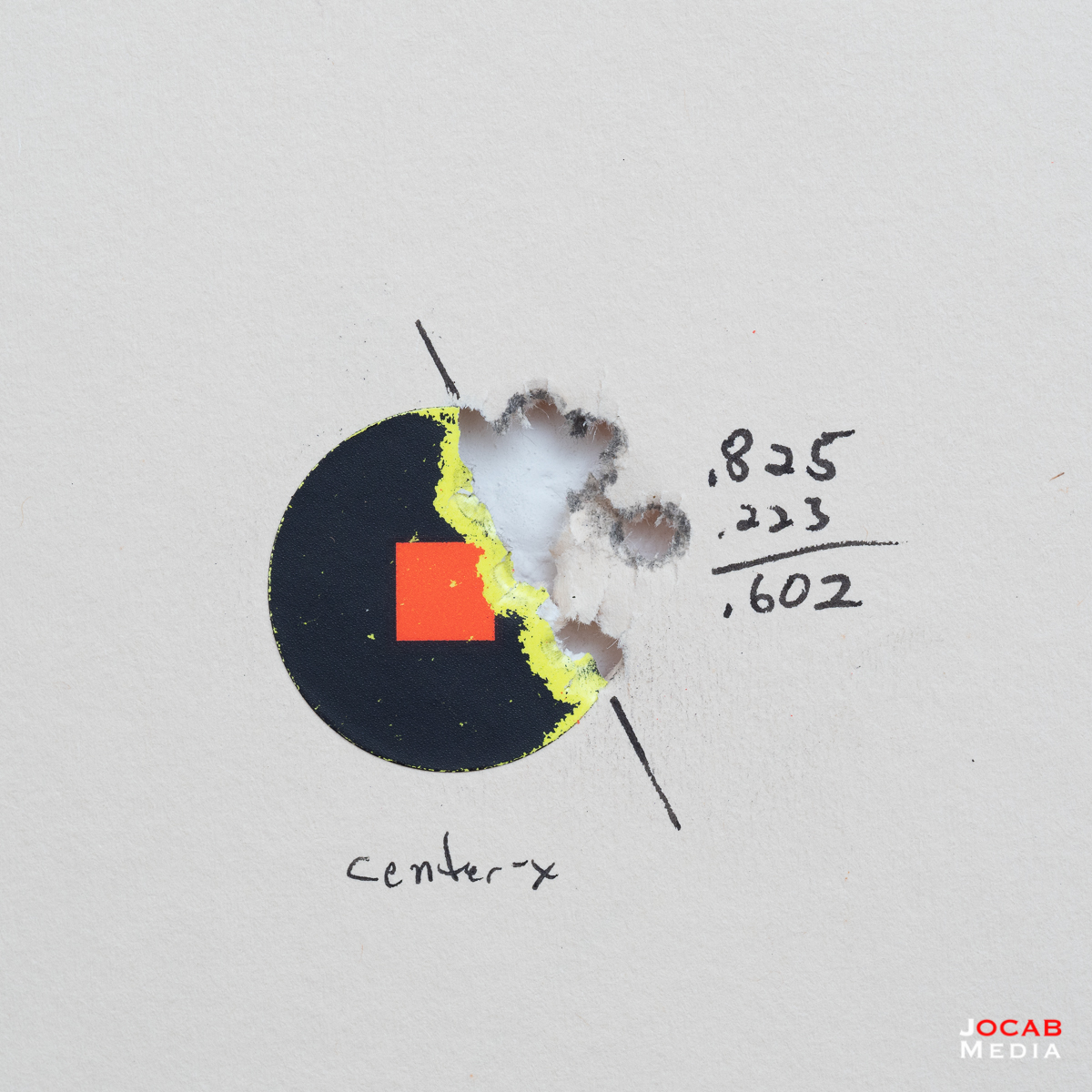
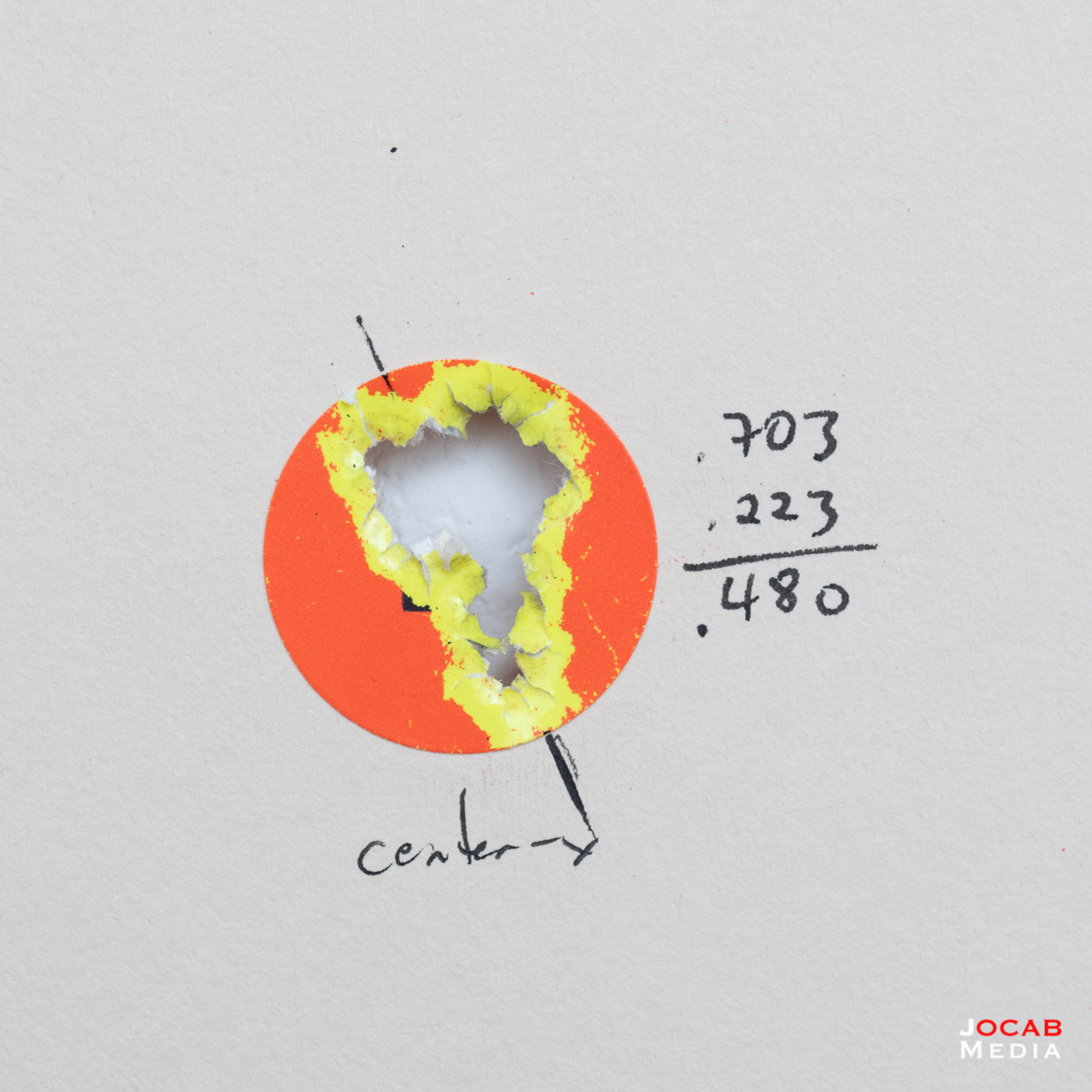
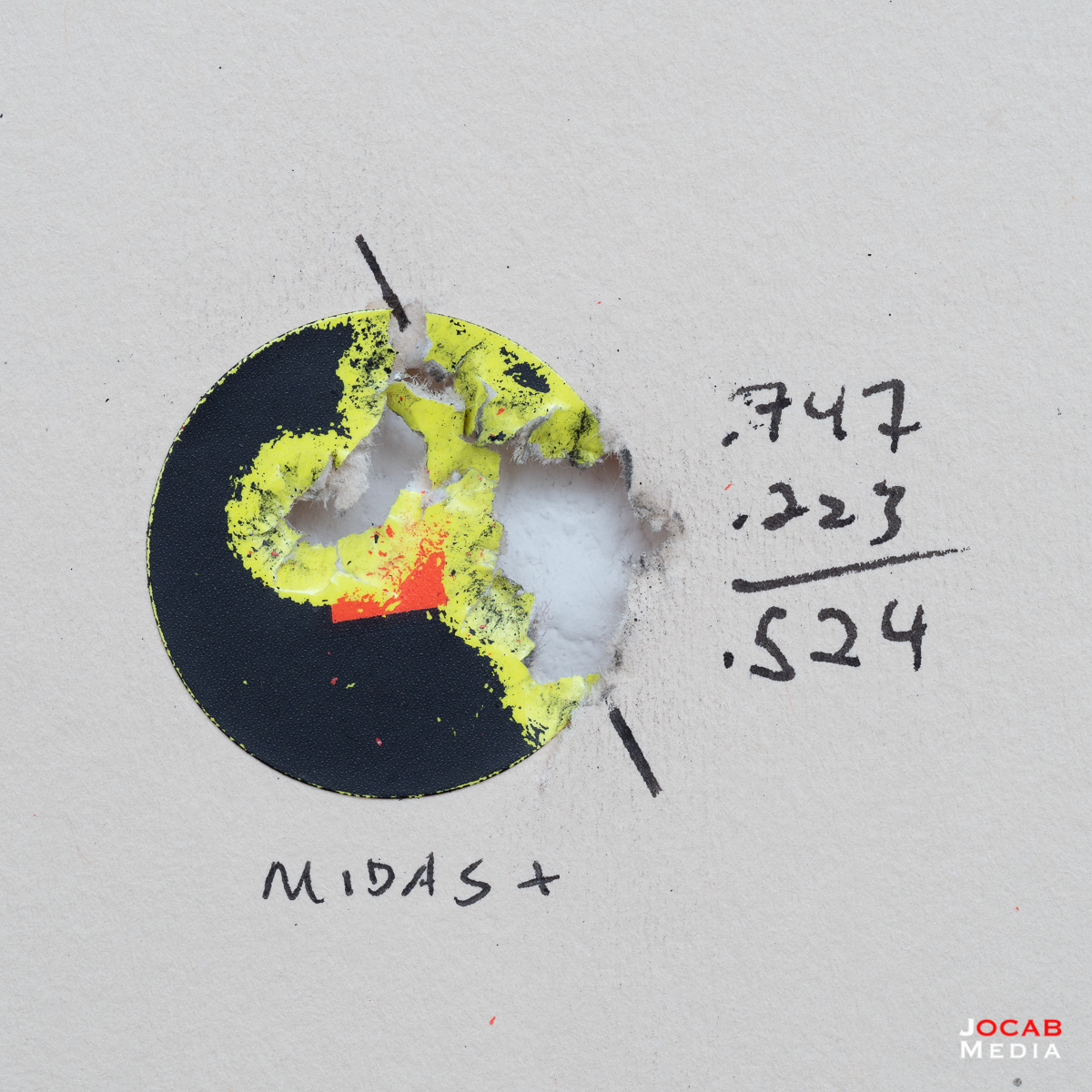
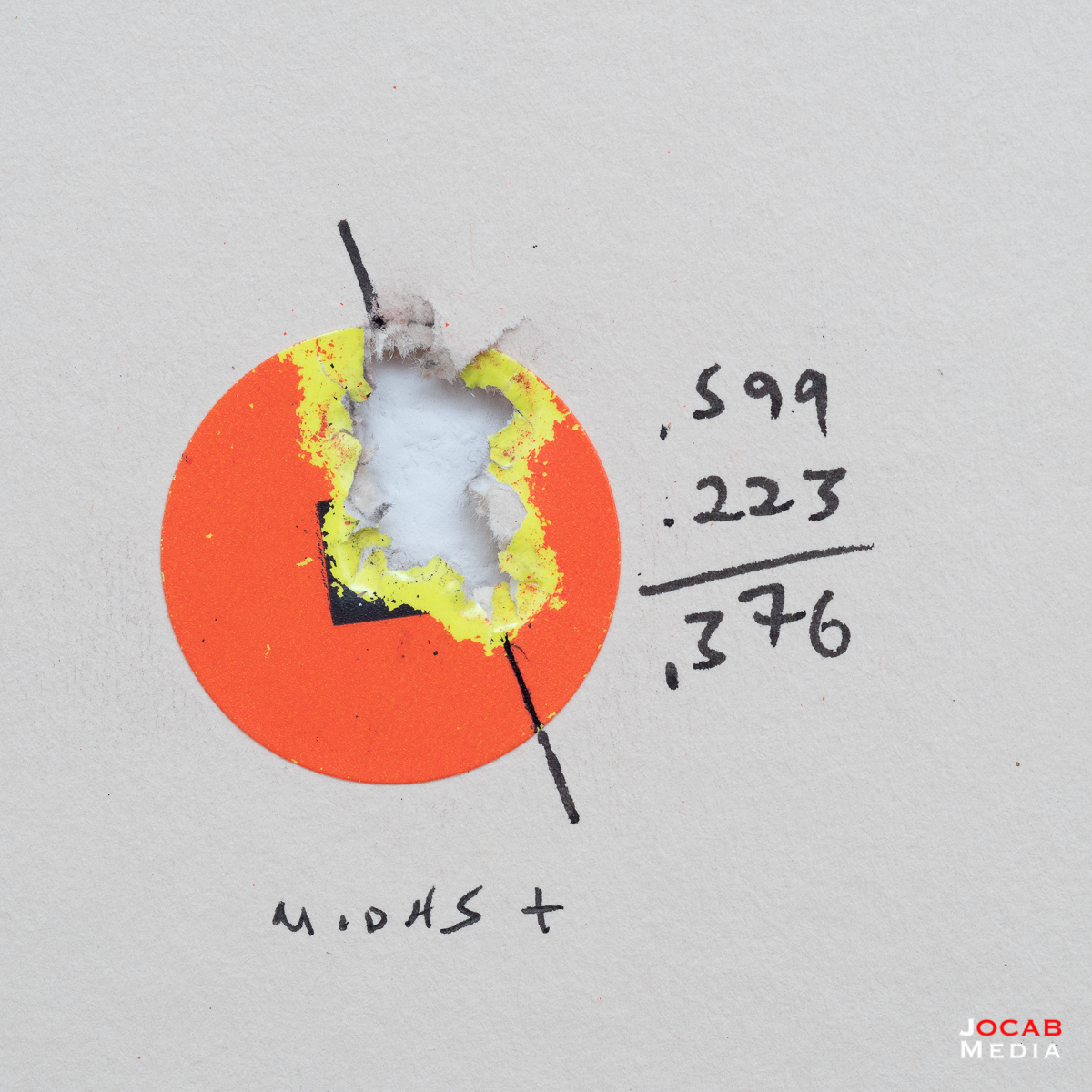
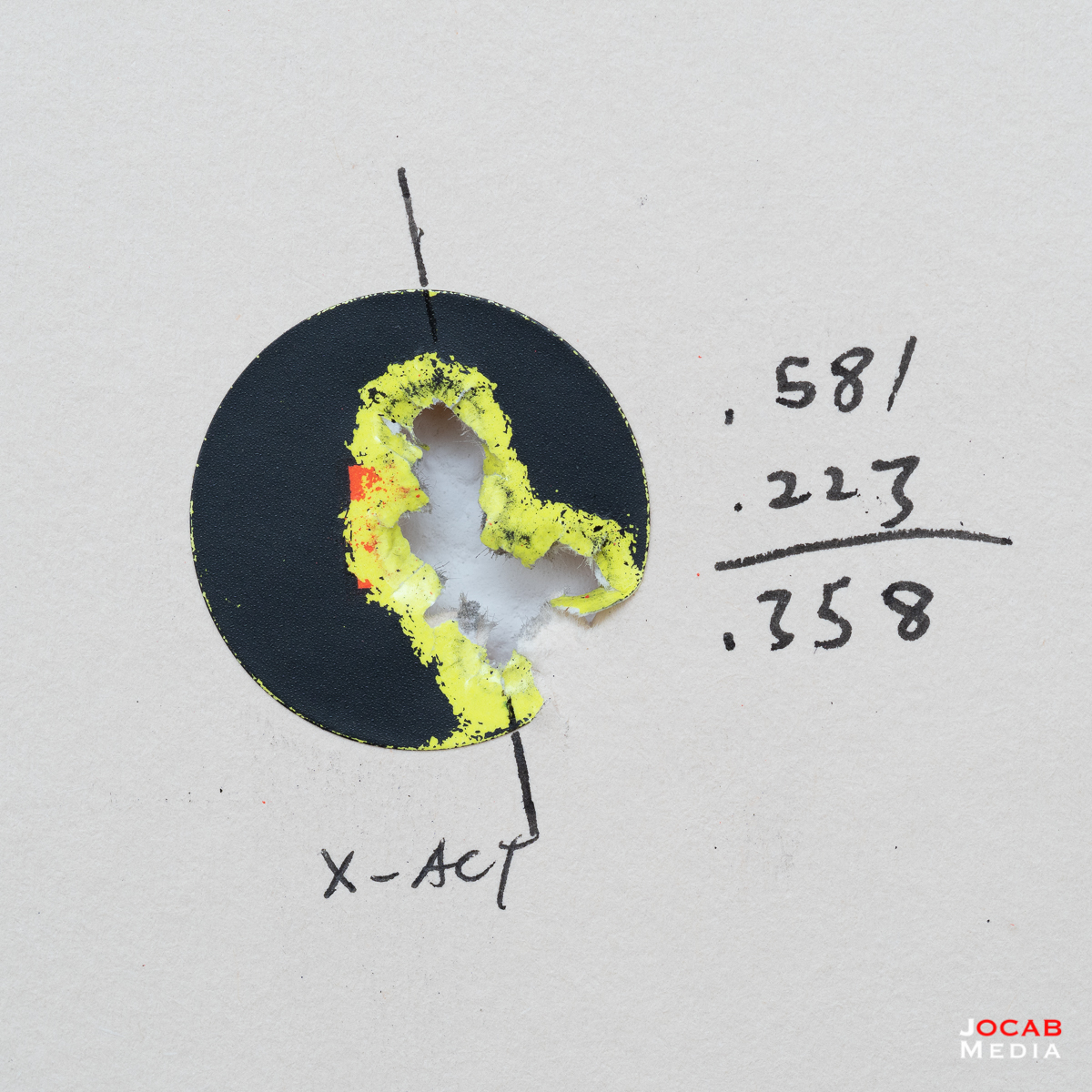
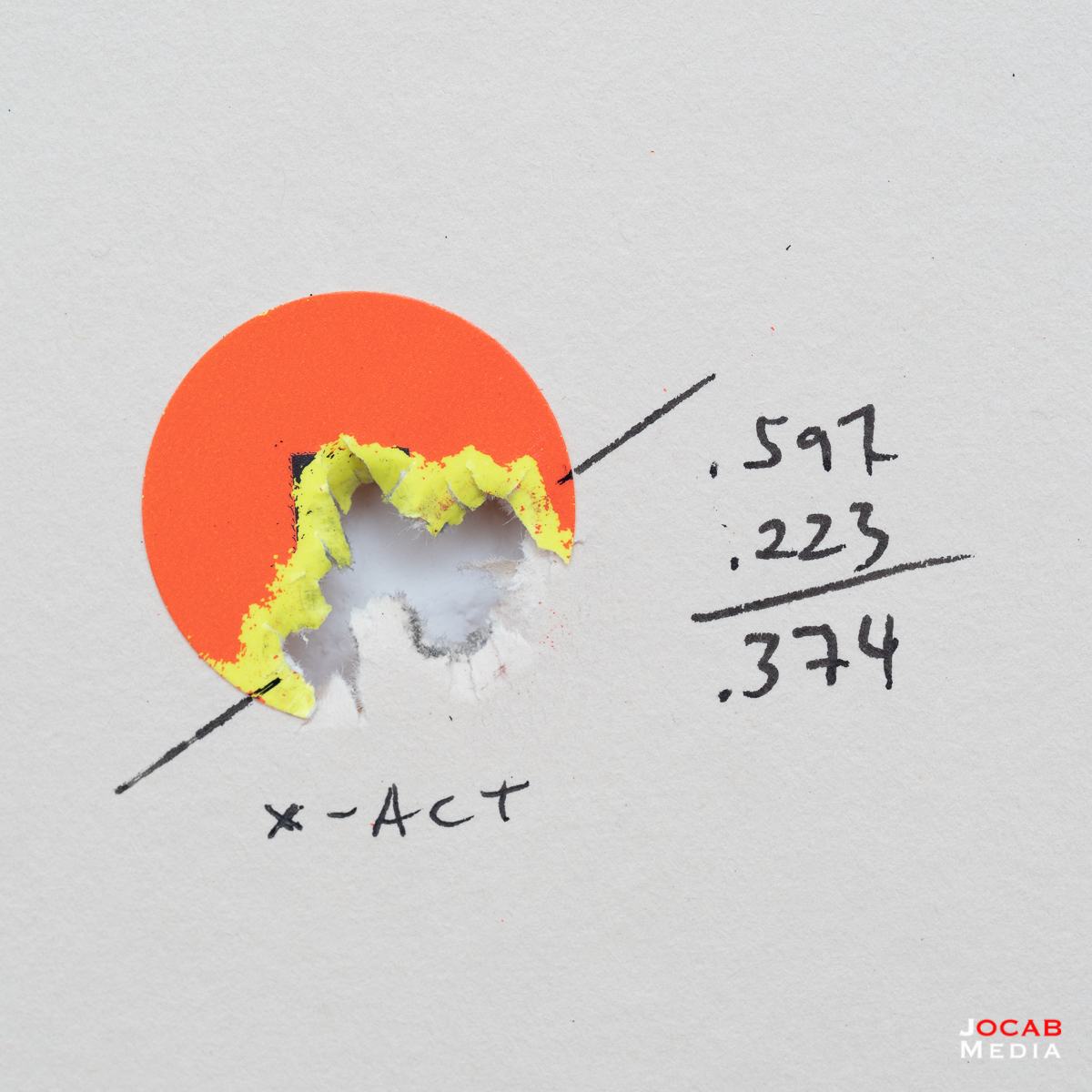
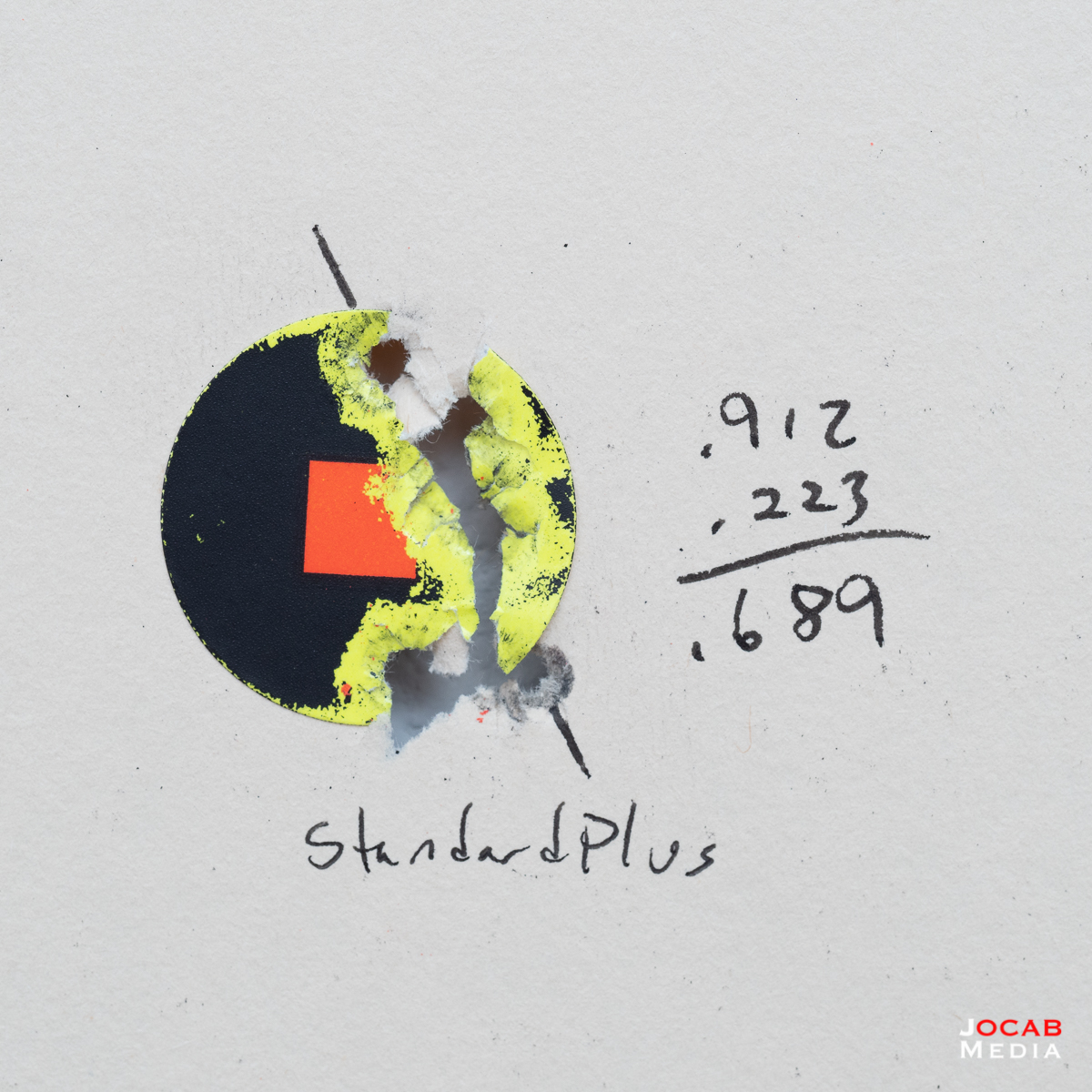
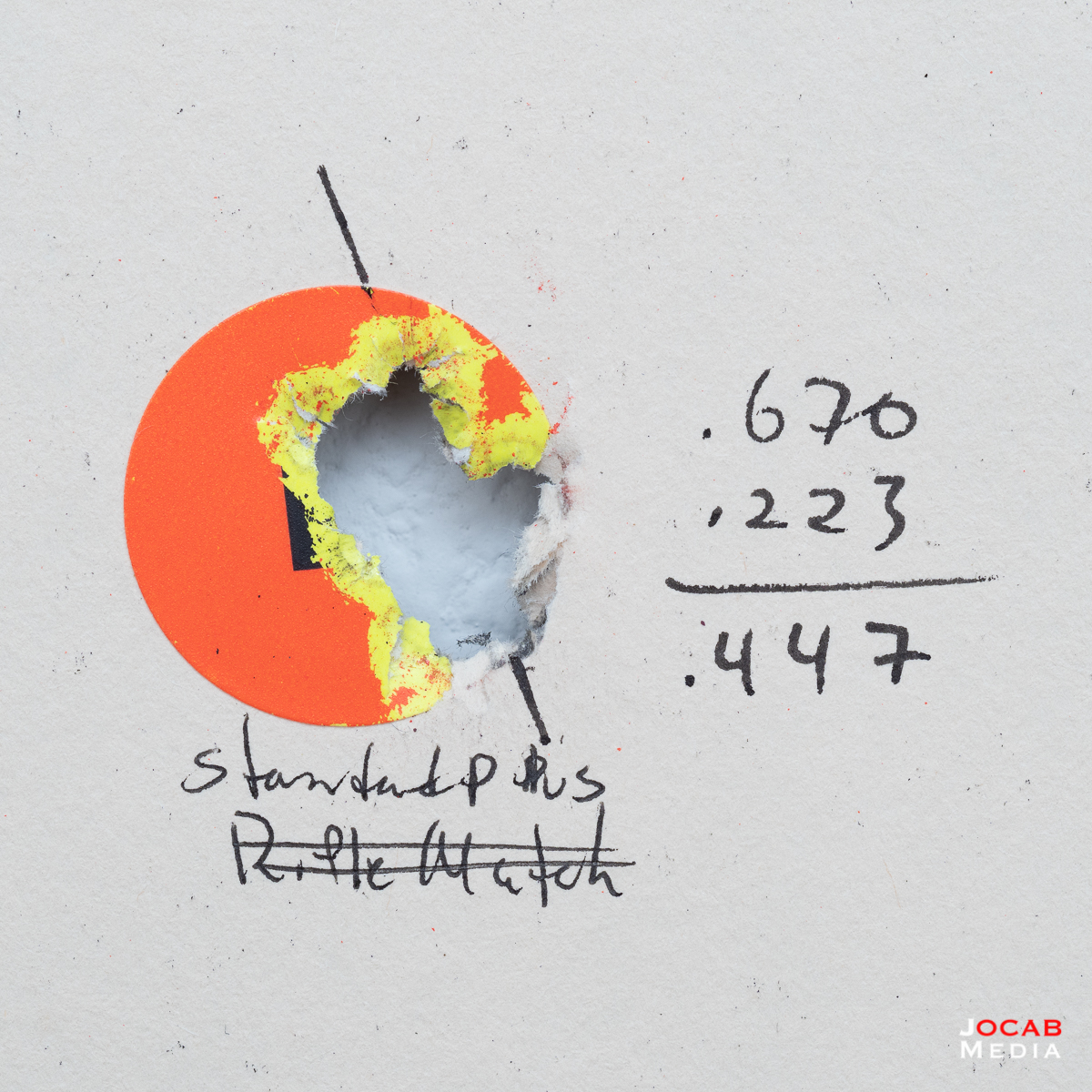
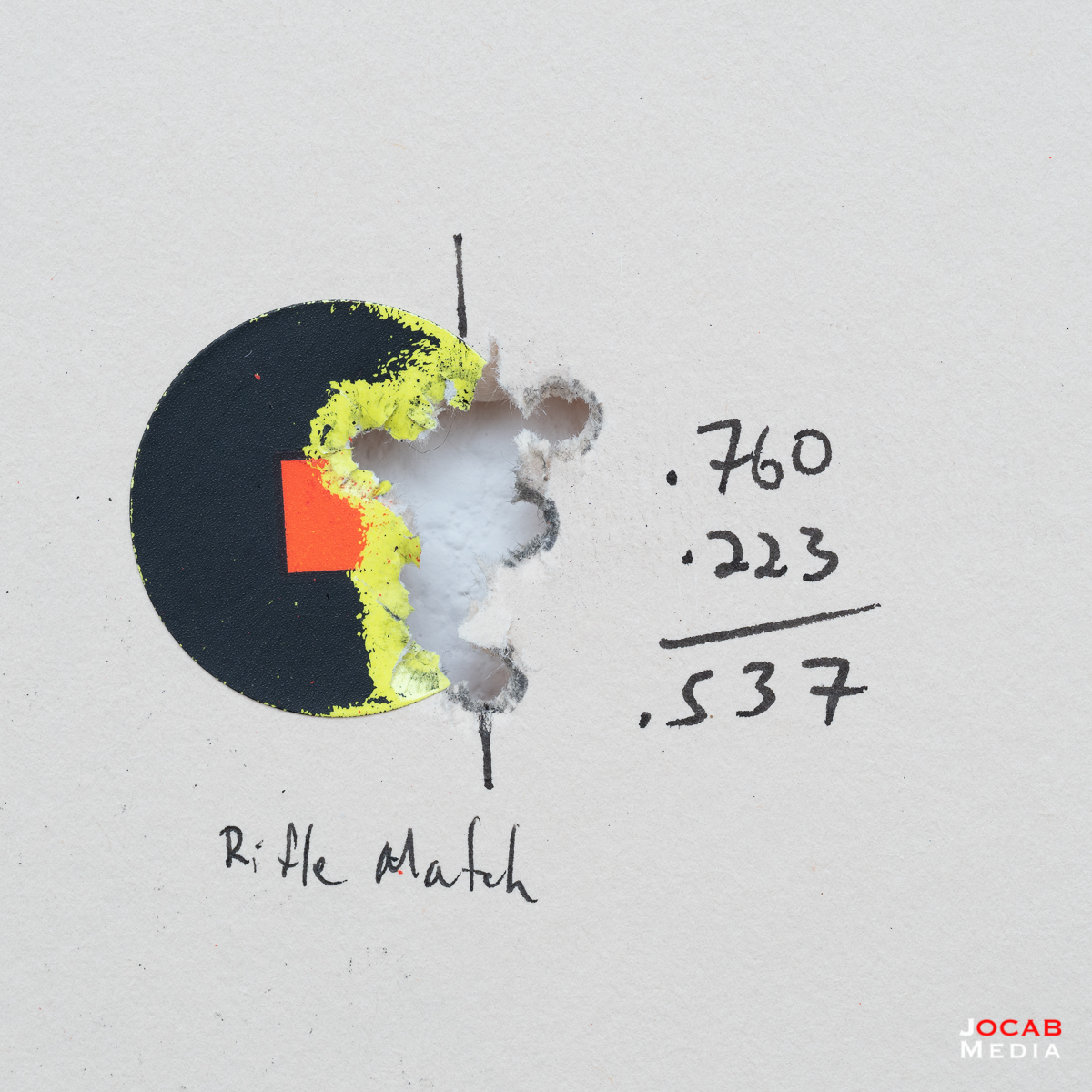
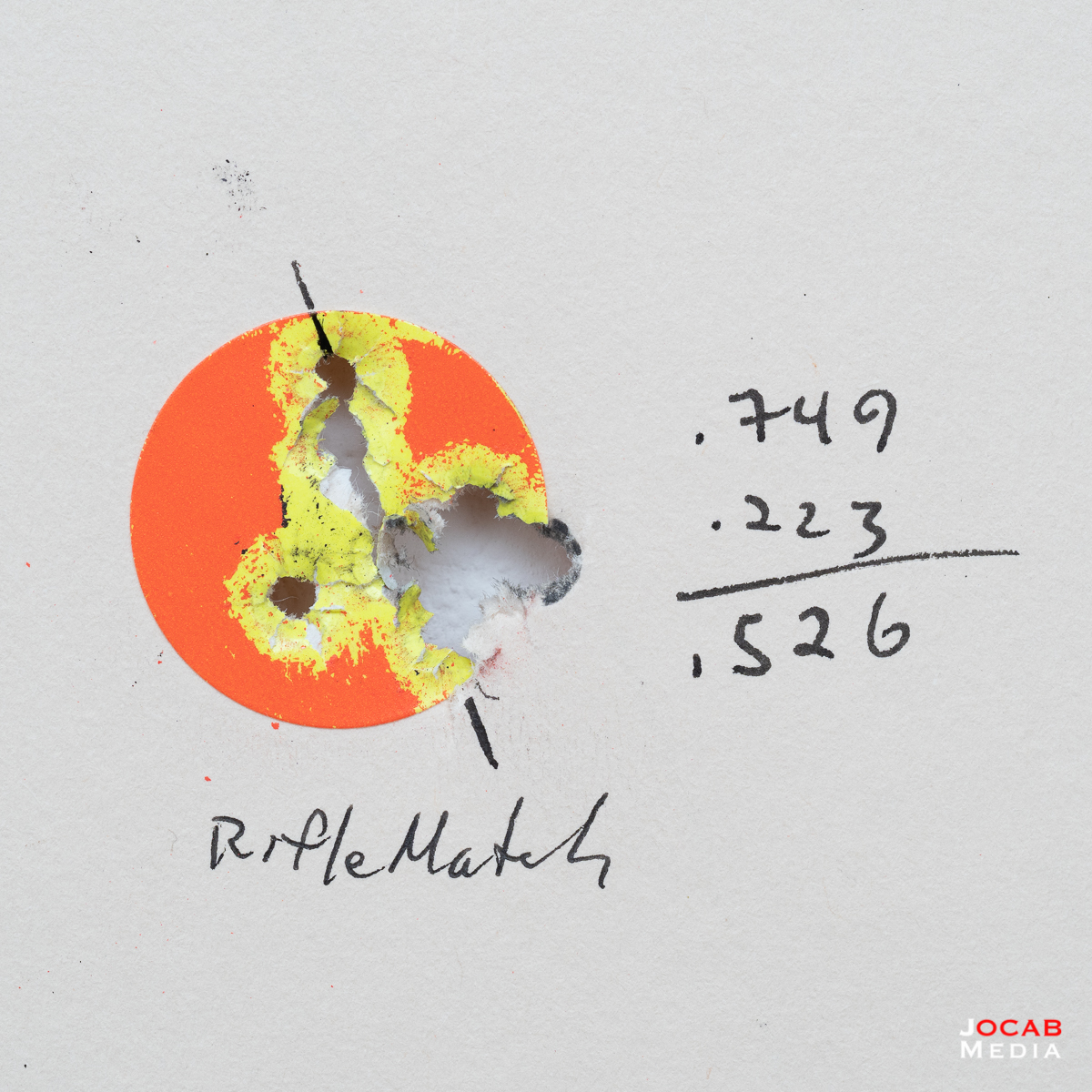
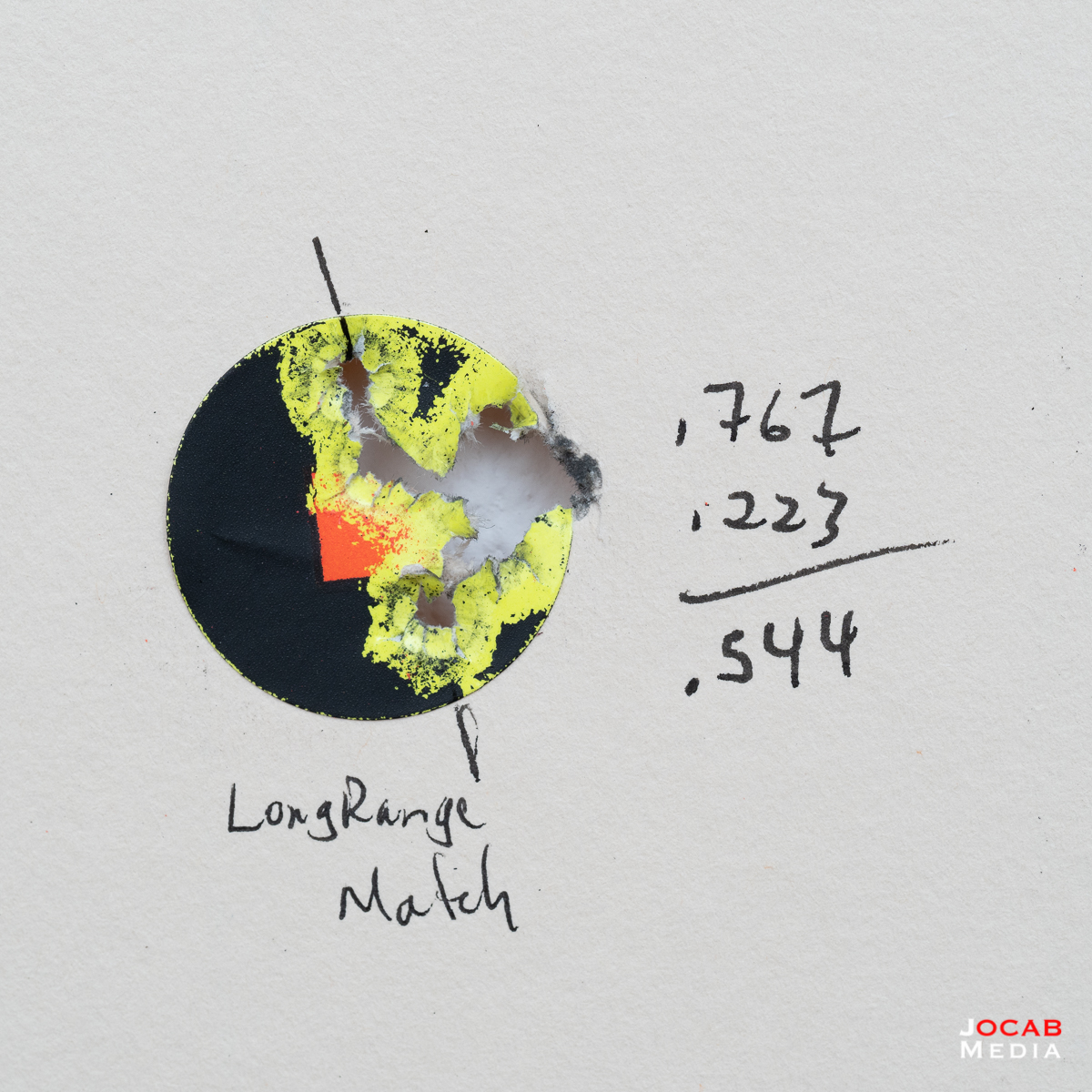
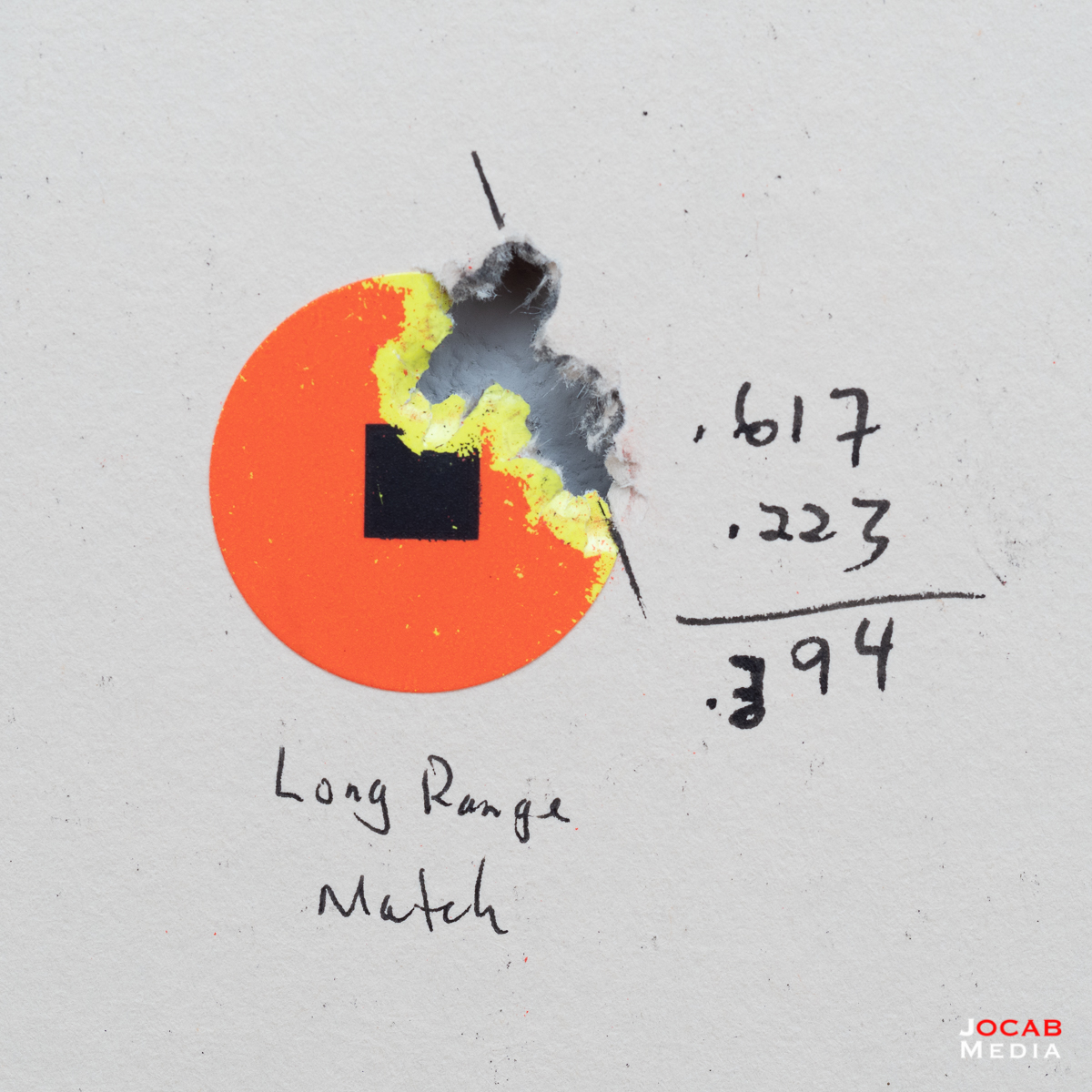
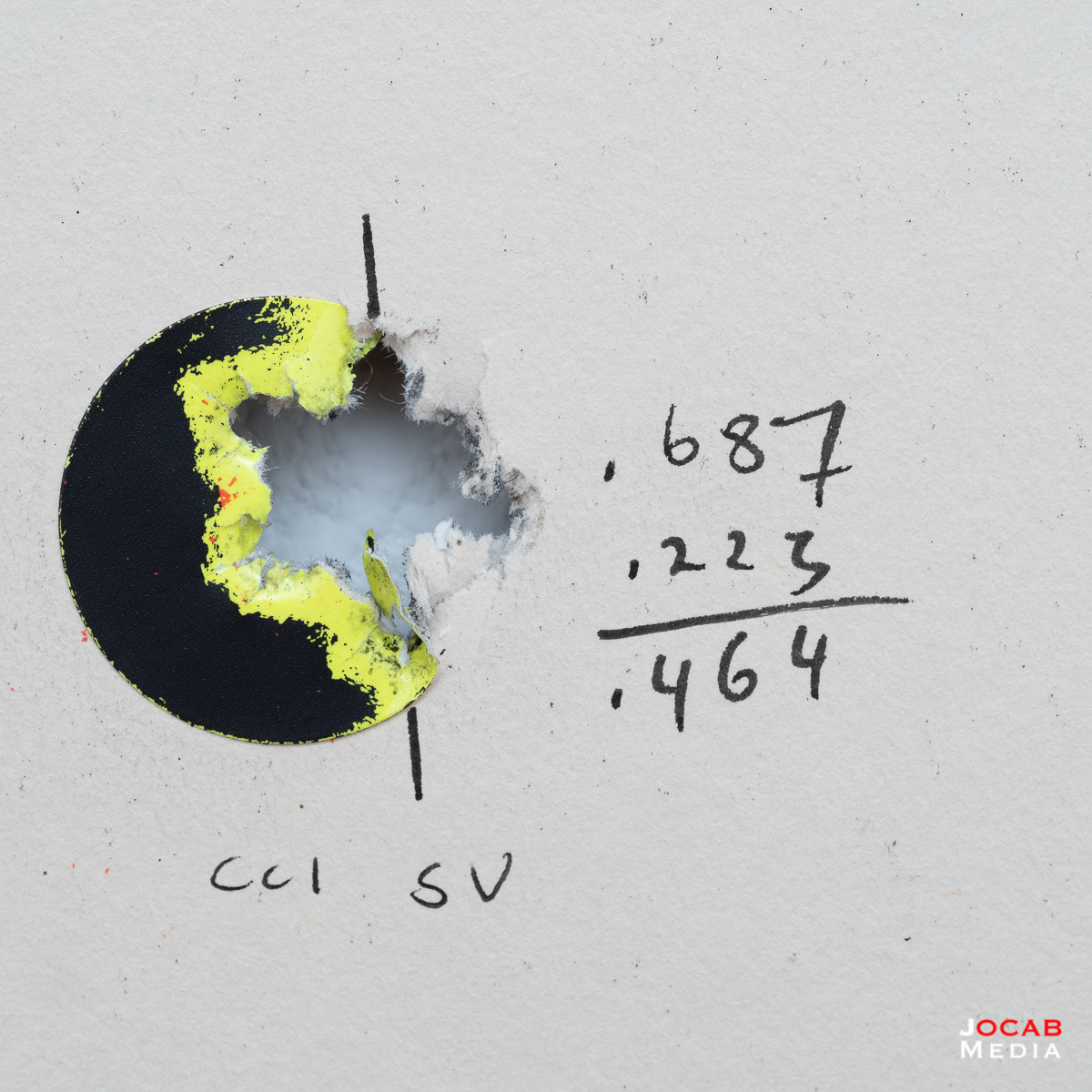
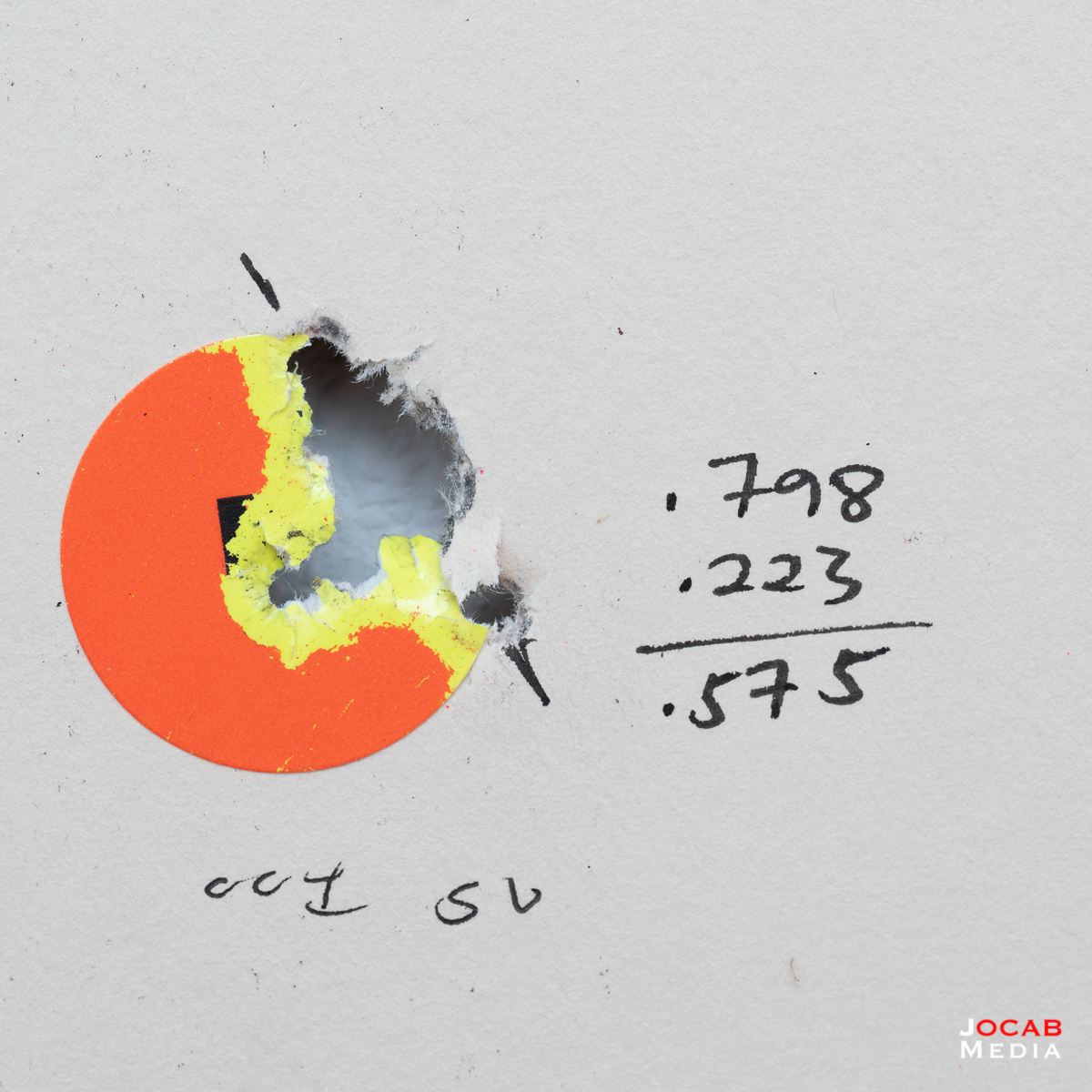
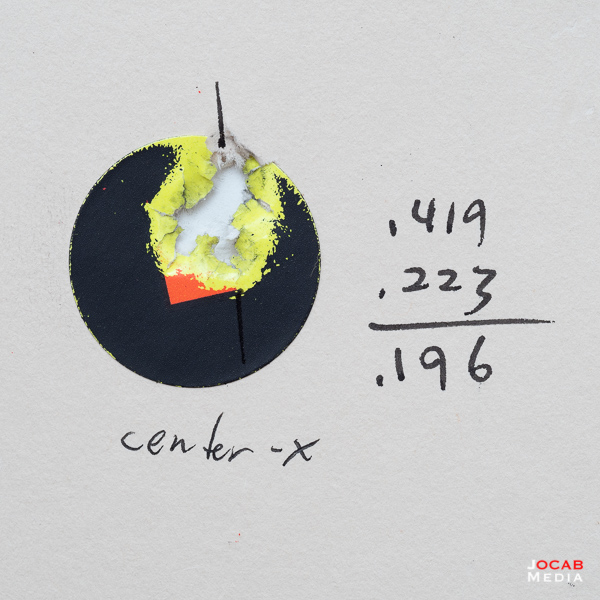
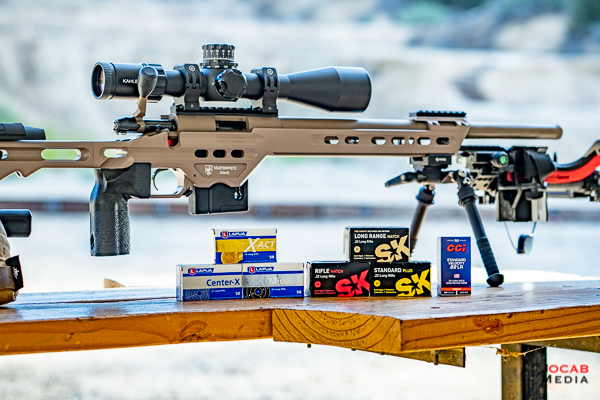
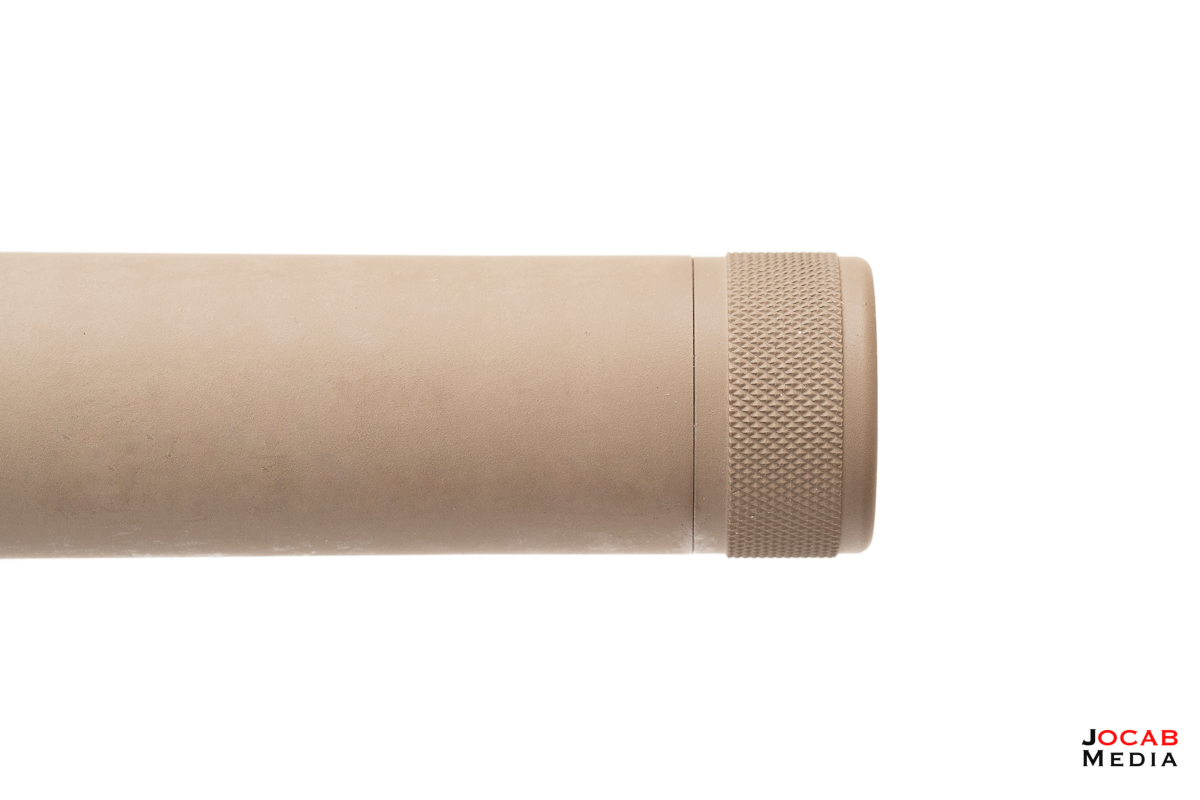
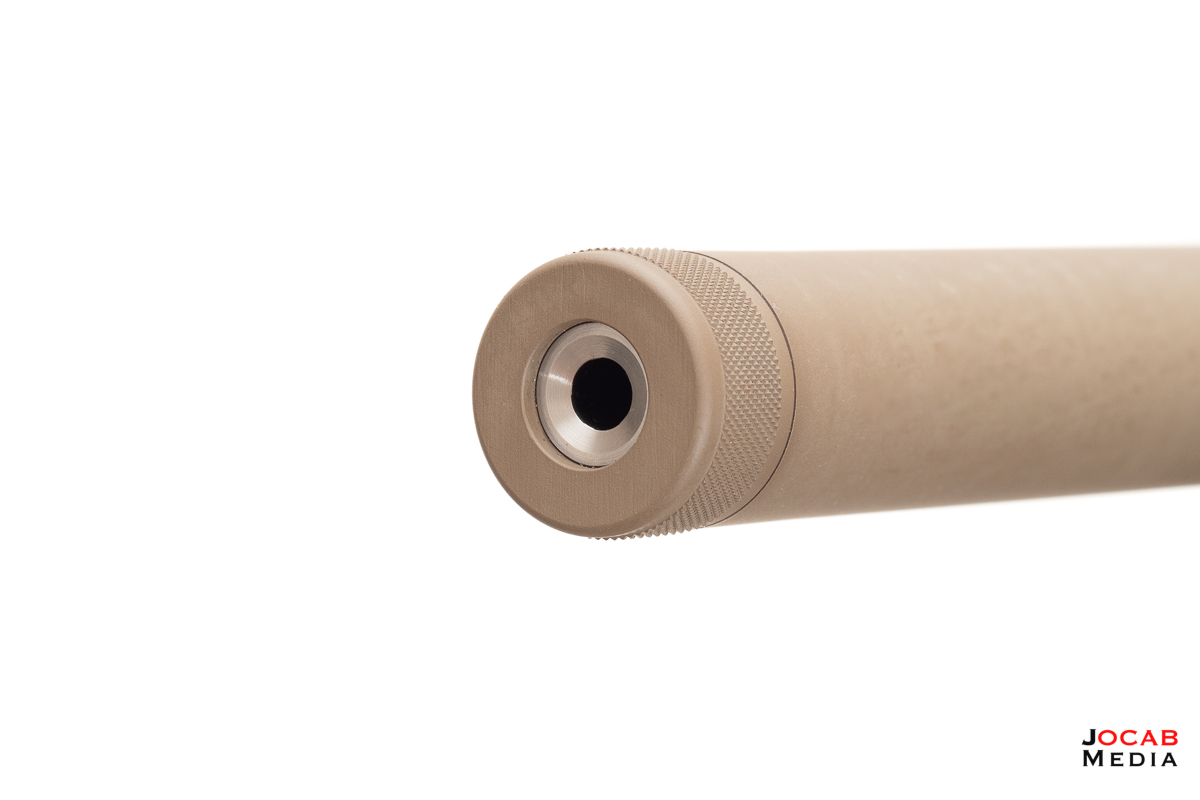
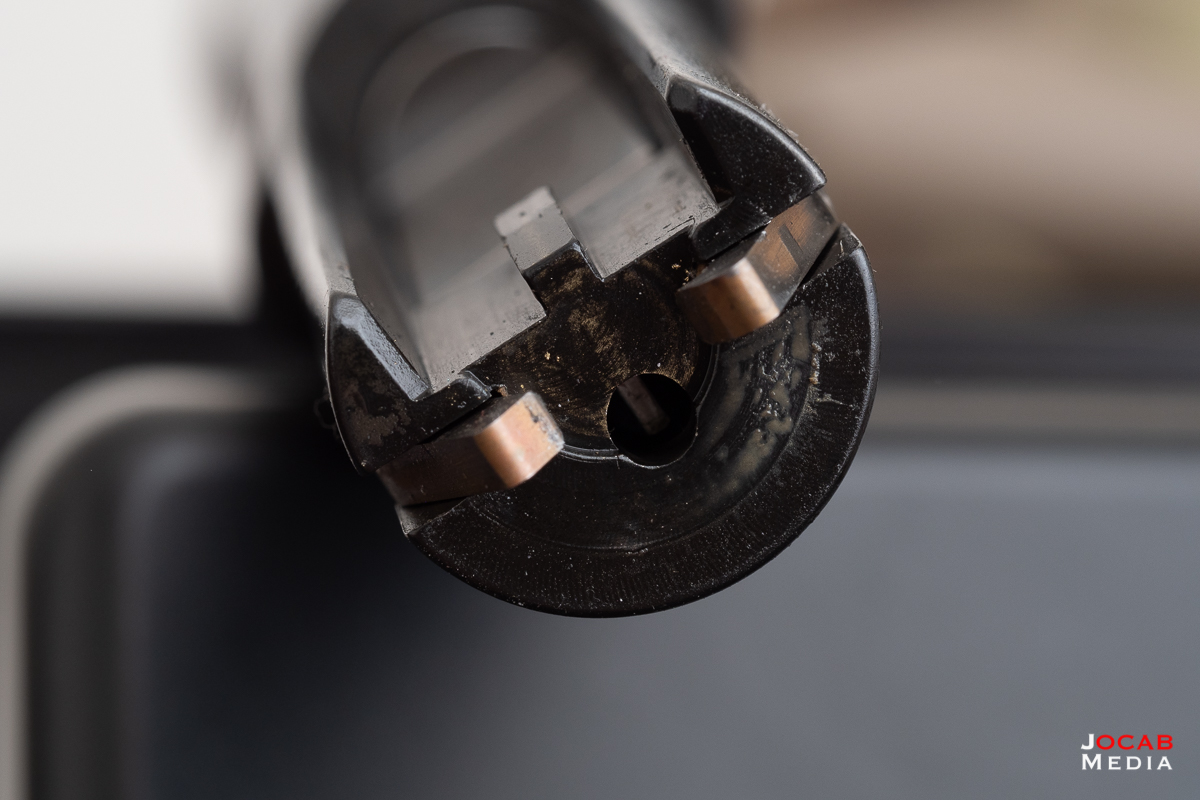
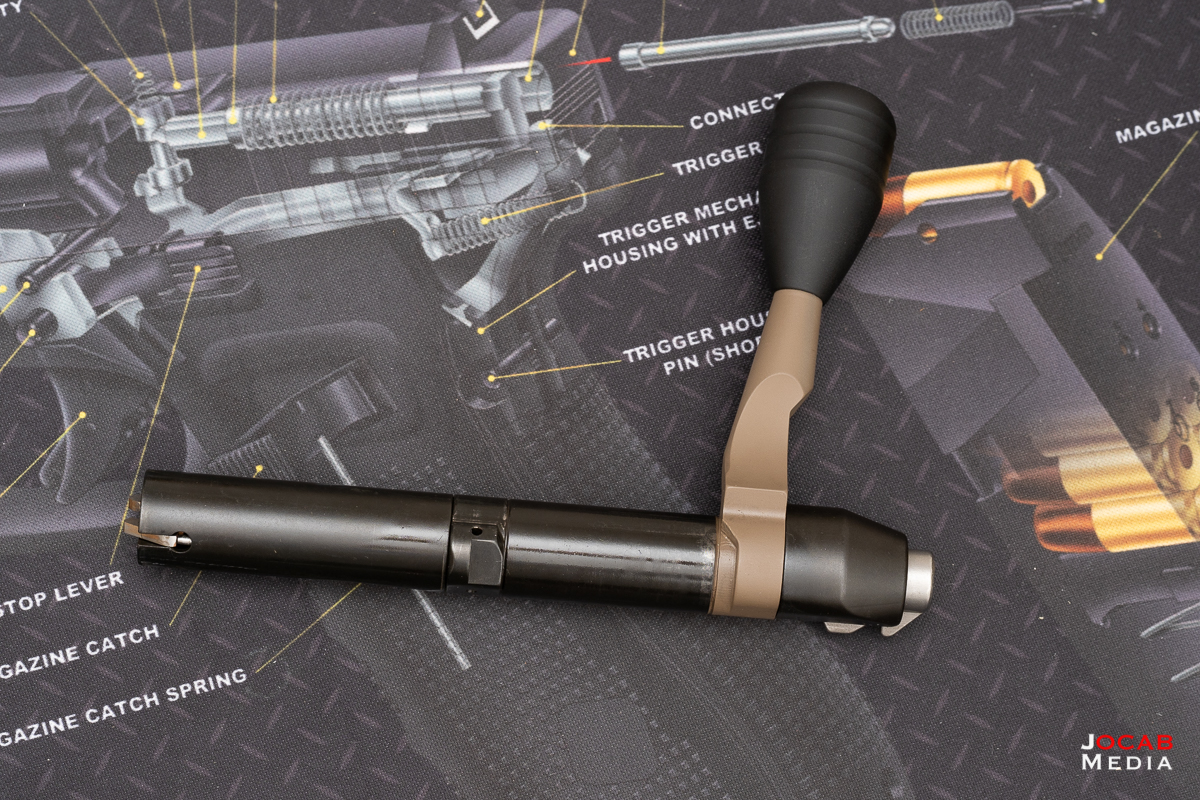
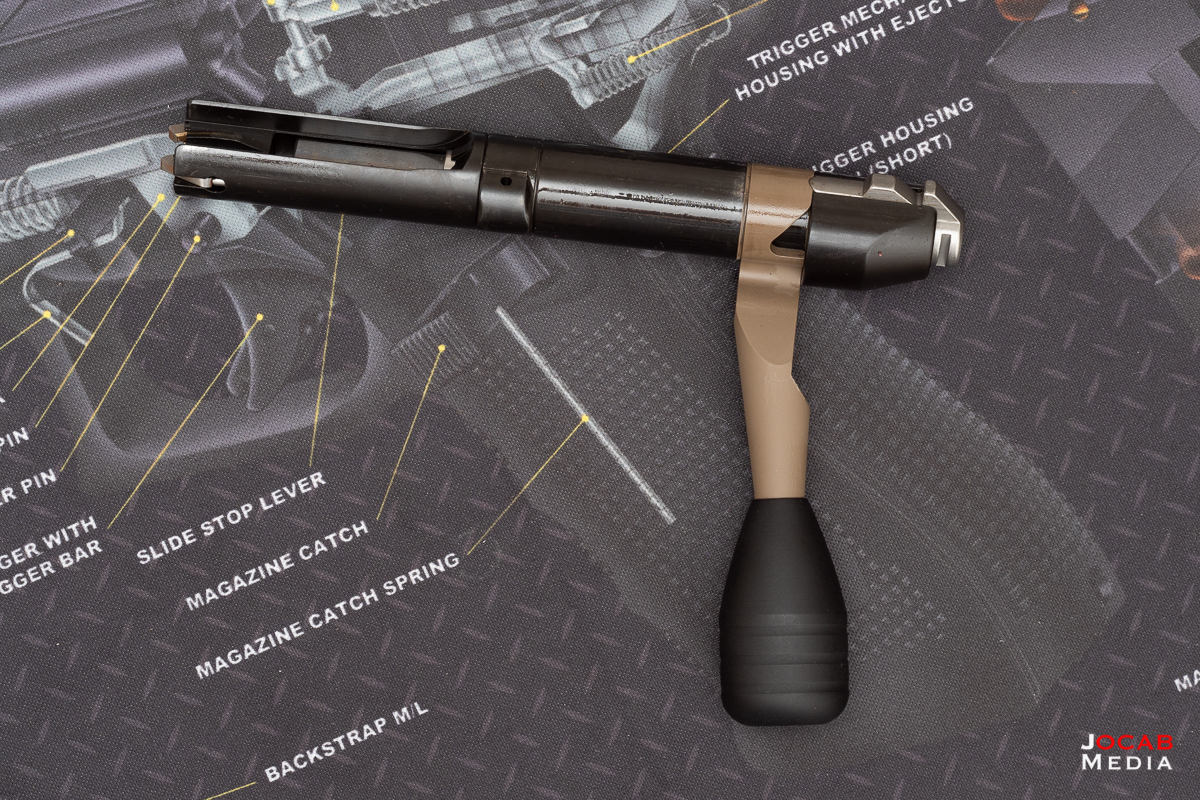
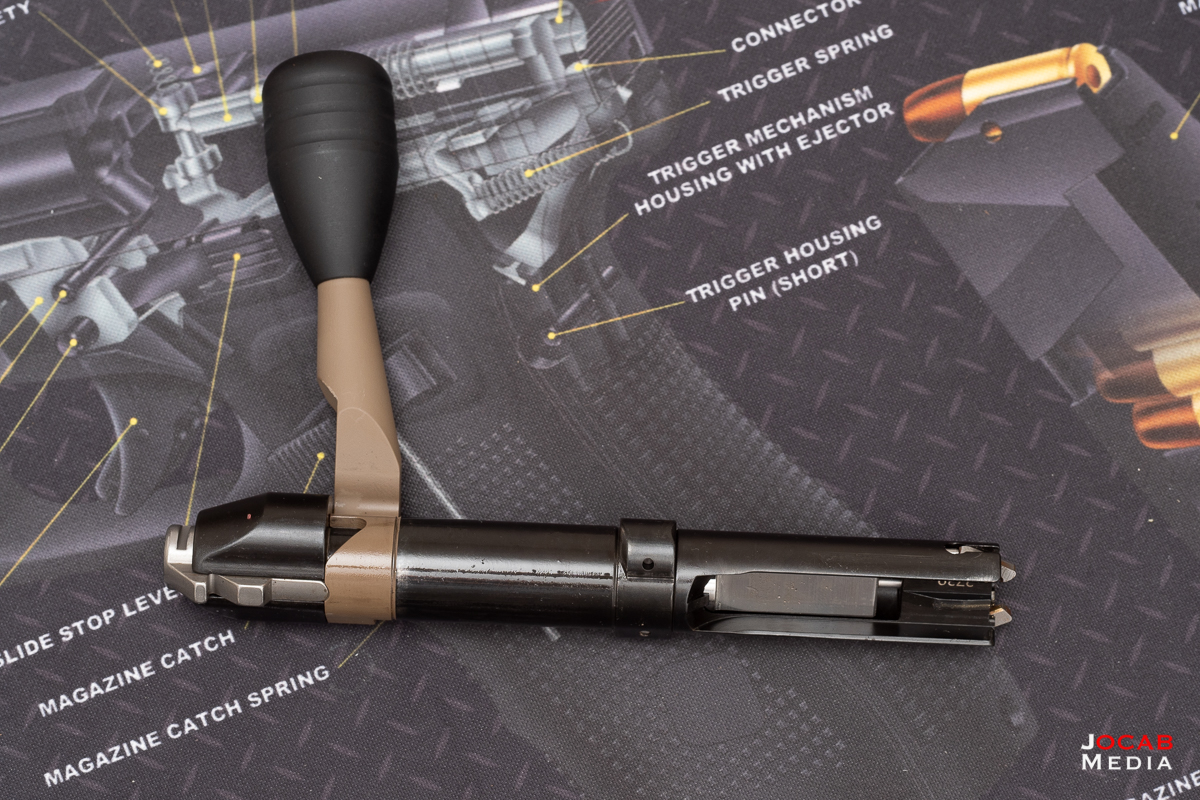
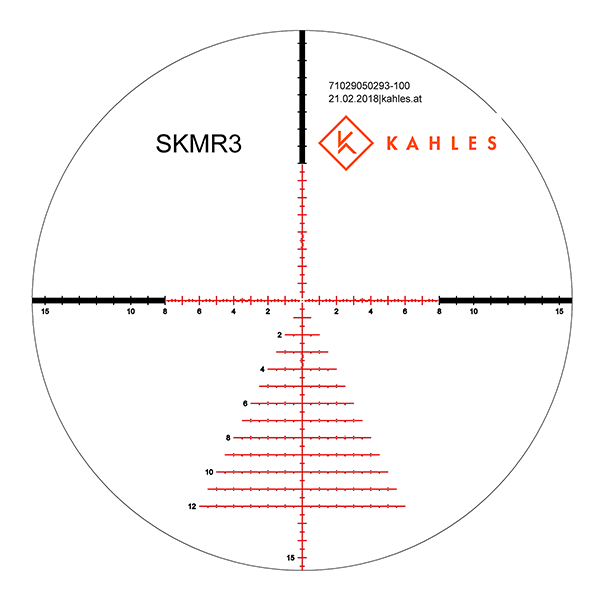
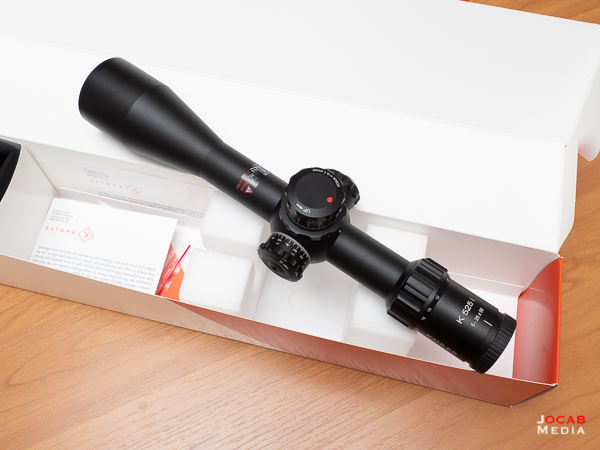
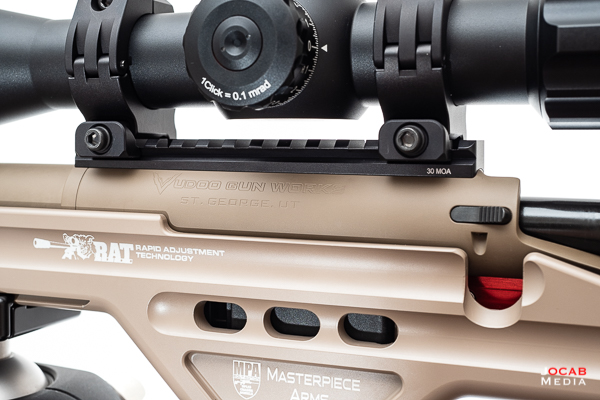
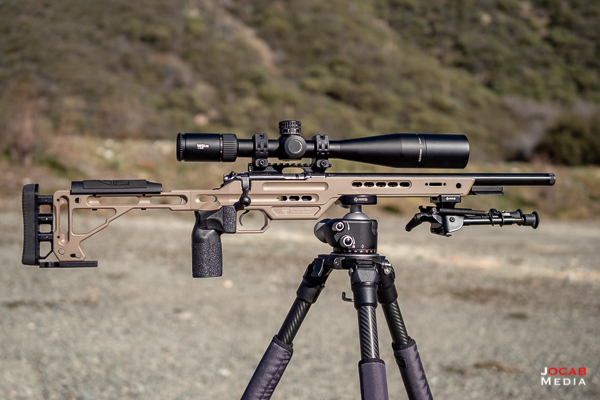
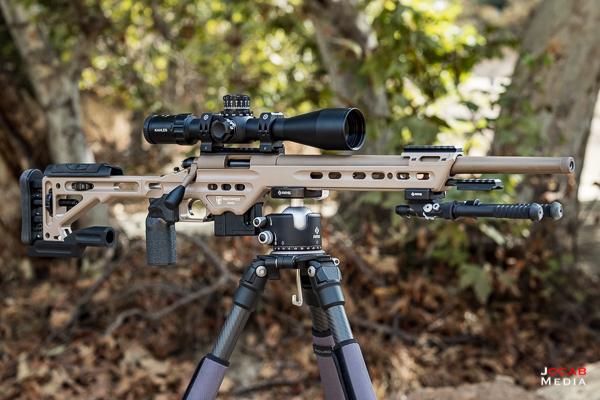
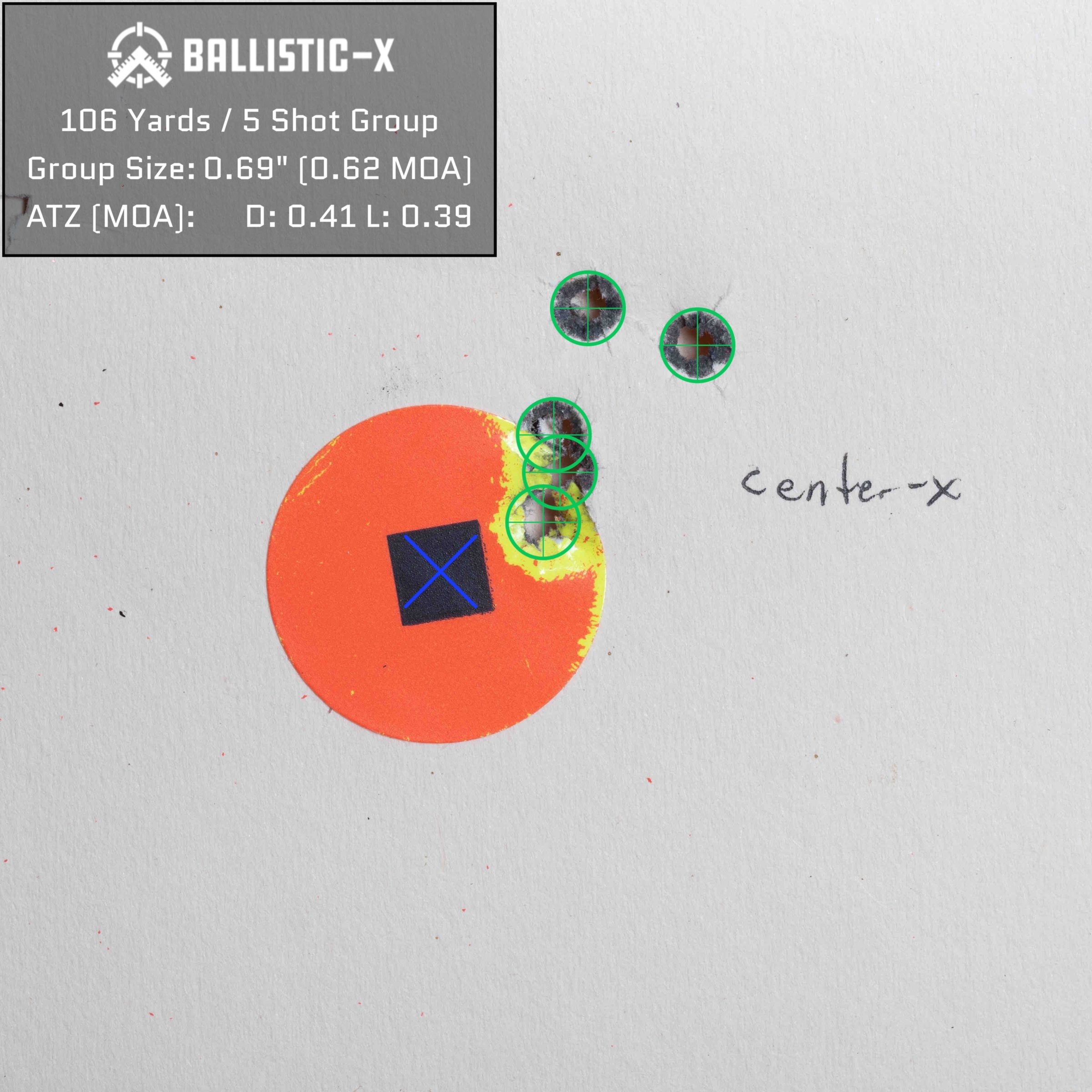
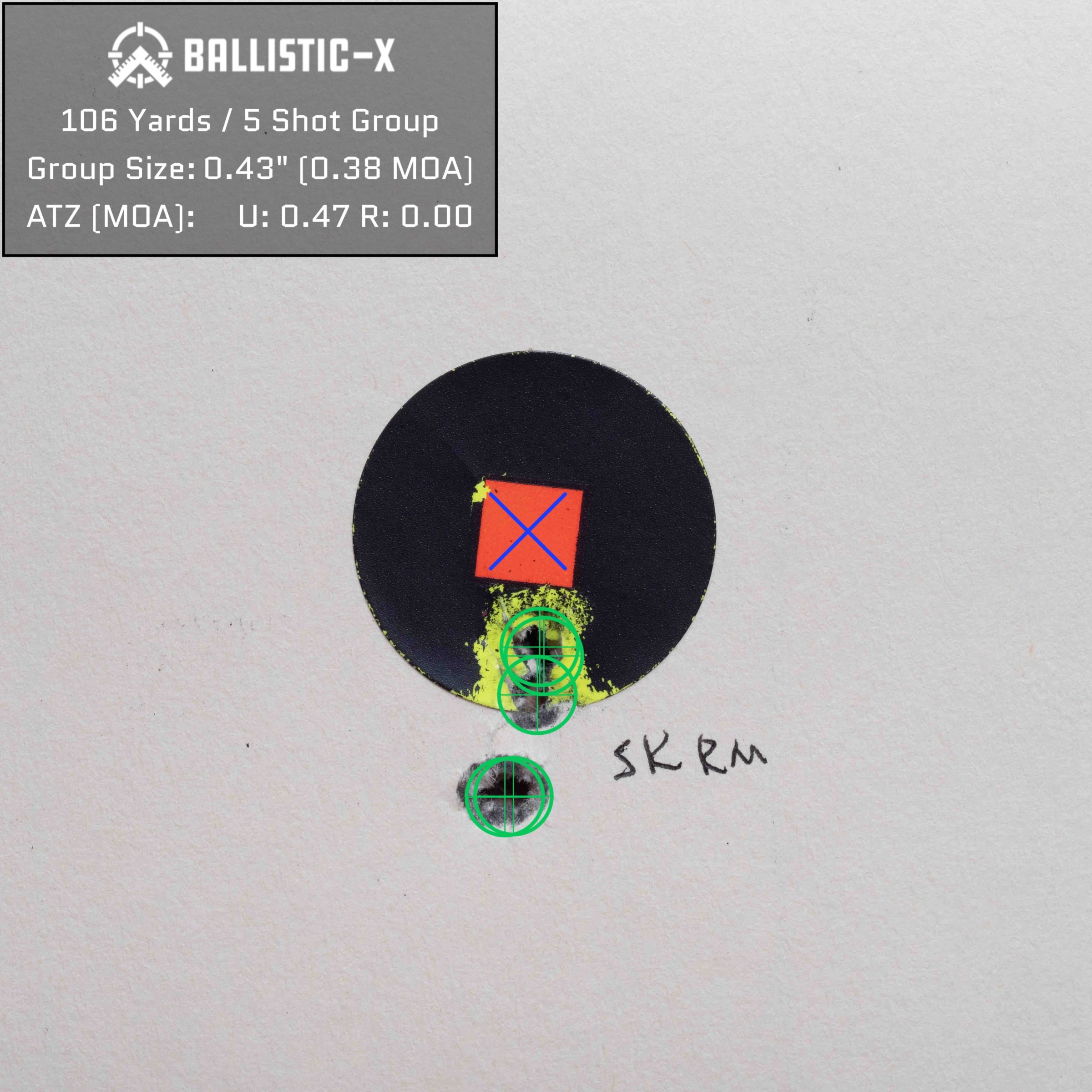
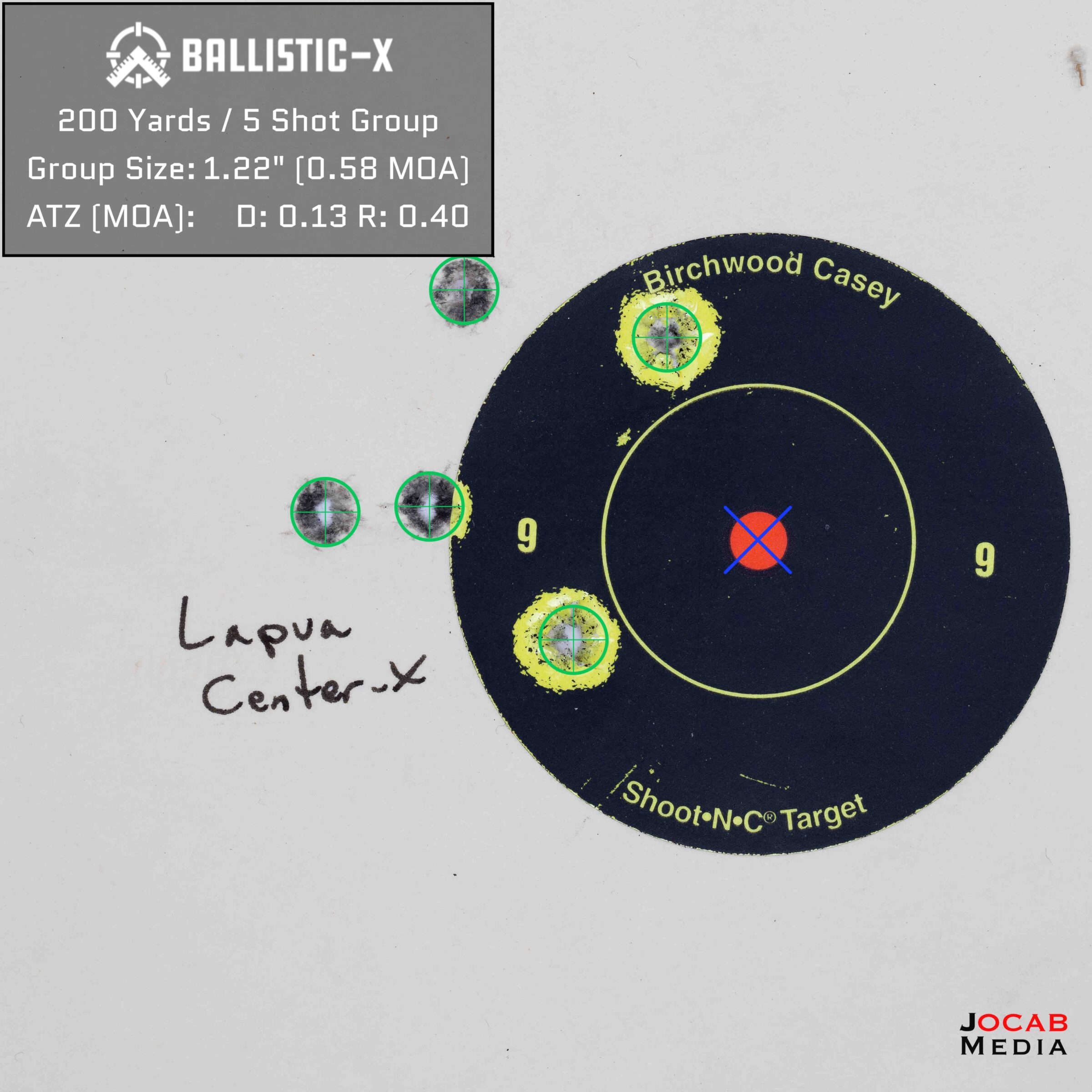
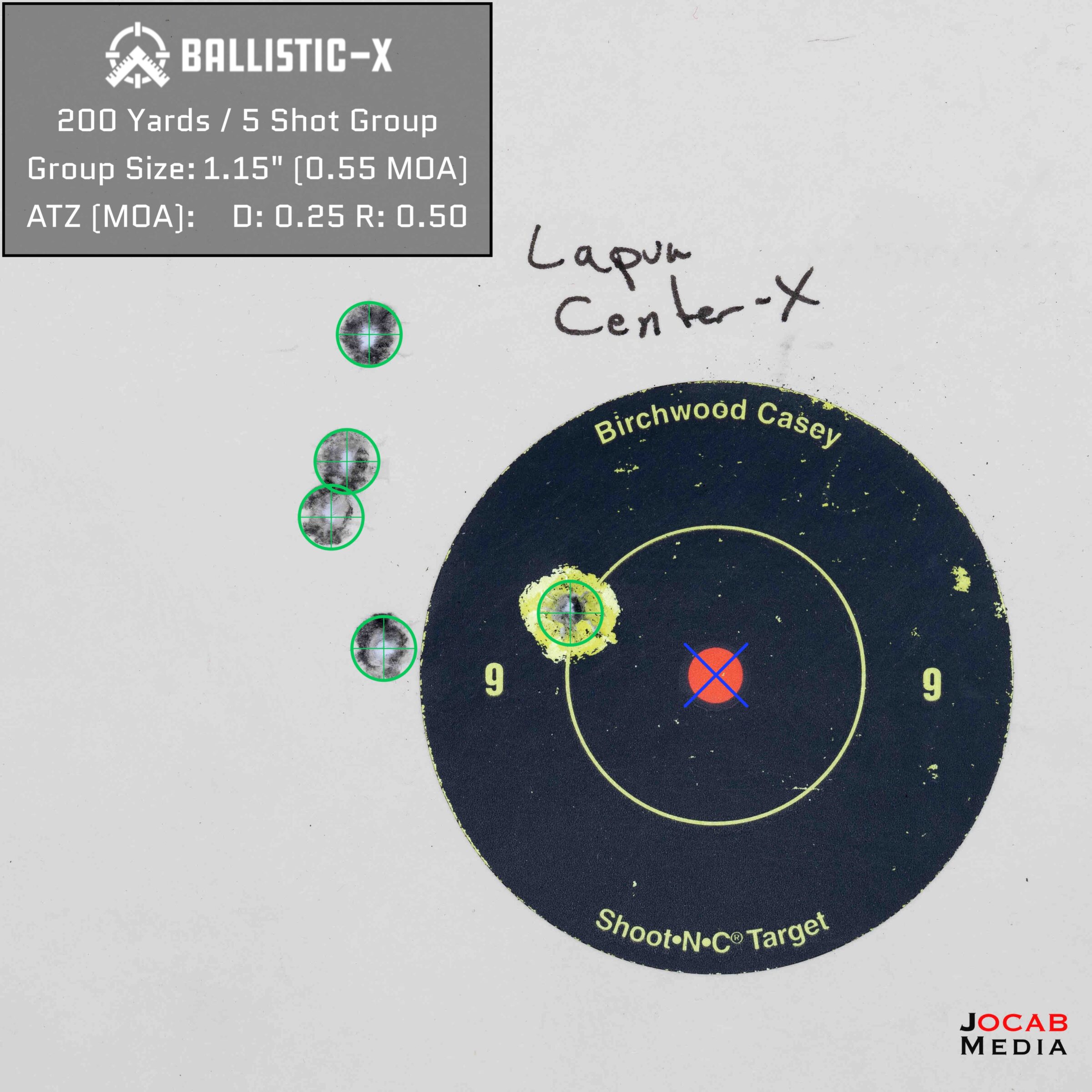
David C
What a super rifle. Very nice photos and narrative. The S&B PMII scopes also don’t ship with a sunshade (amazing).
FRANK B KENDALL
Great pics and clear concise writing.
Vudoo Gun Works V-22 / NRL22 Rifle 2021 Update – ocabj.net
[…] in 2019 I put together a Vudoo Gun Works V-22 .22LR rimfire rifle which I use in NRL22 competitions. The configuration of that rifle remained the same since it was […]
Faisal
Great rifle.
What is the dimensions of chamber?